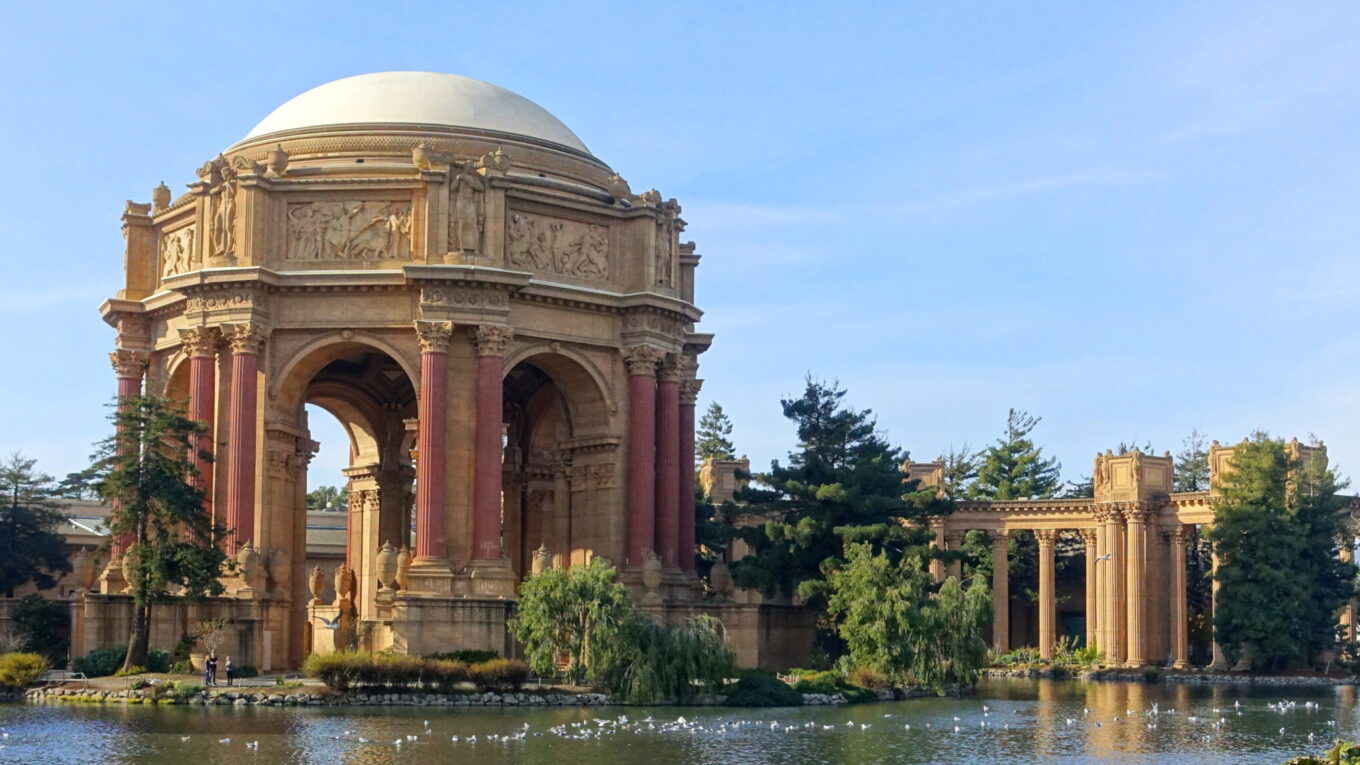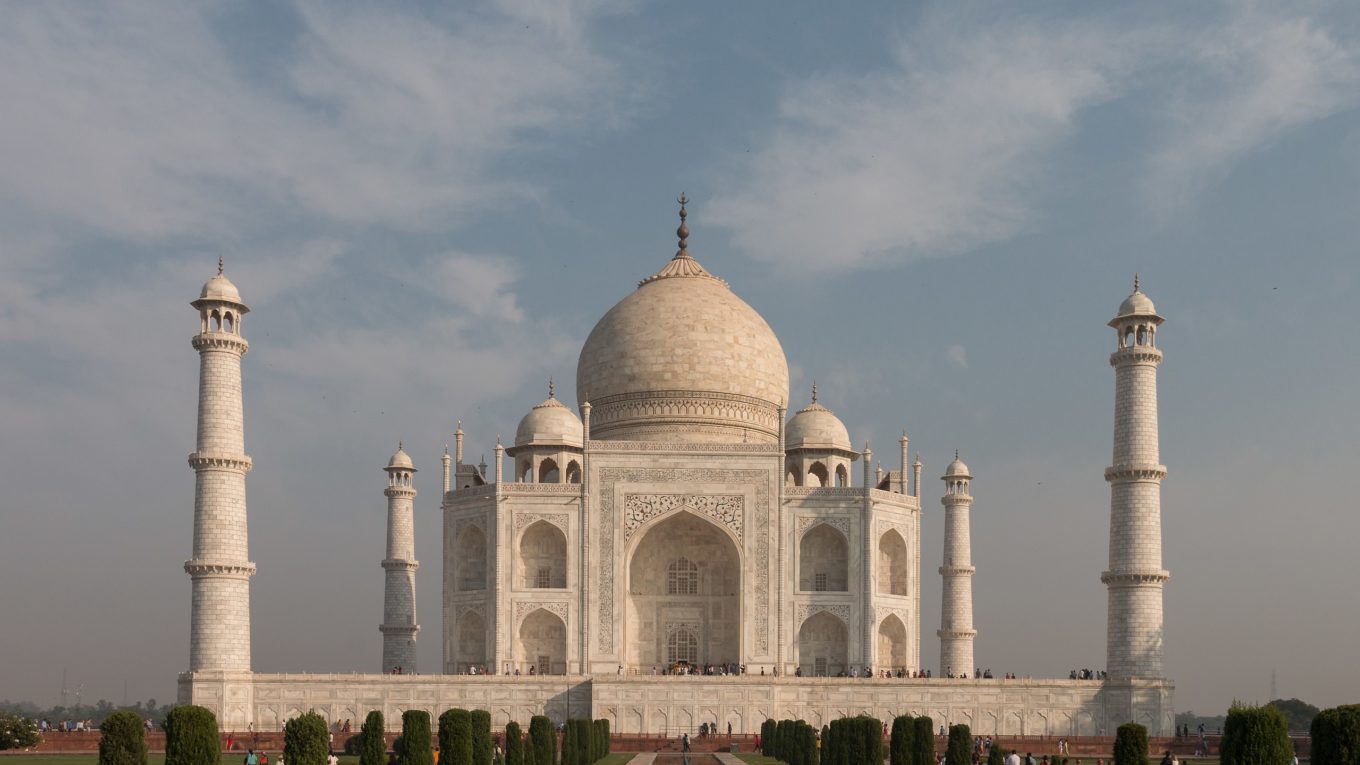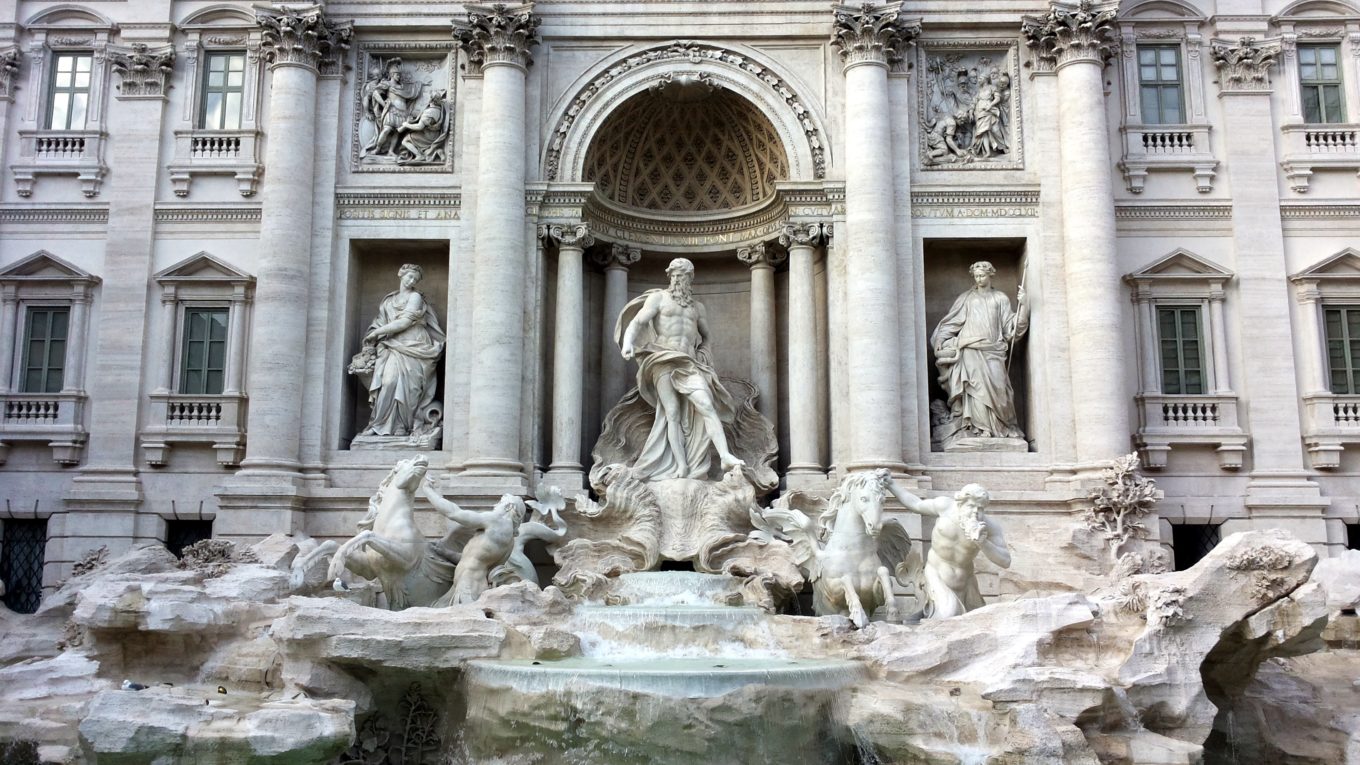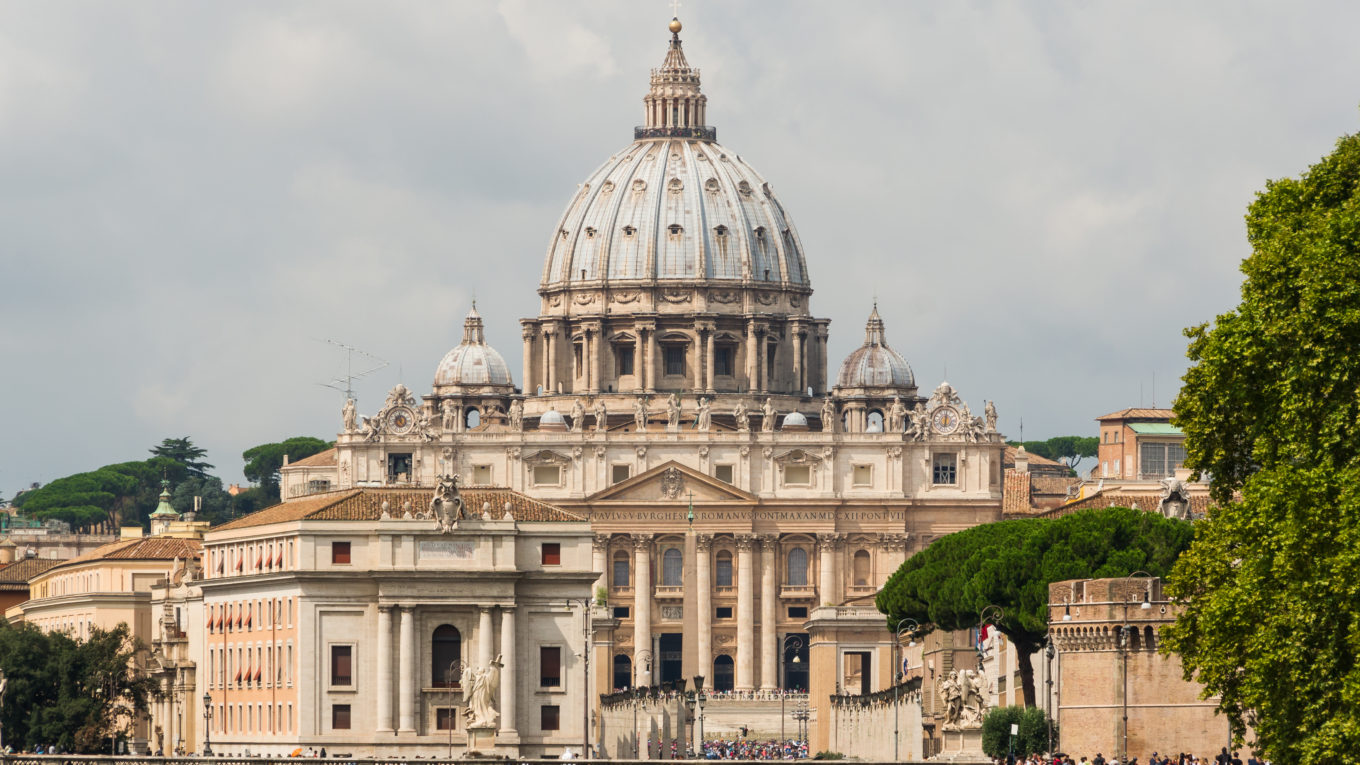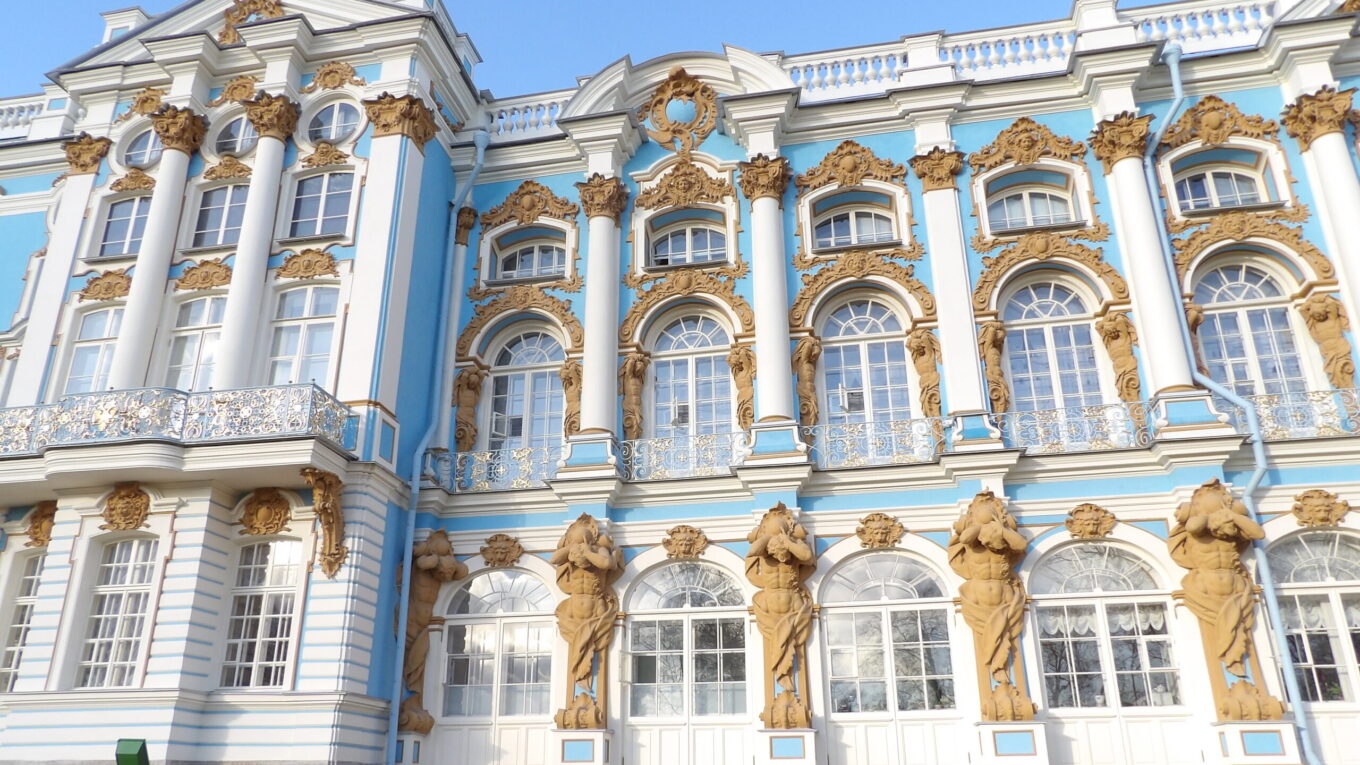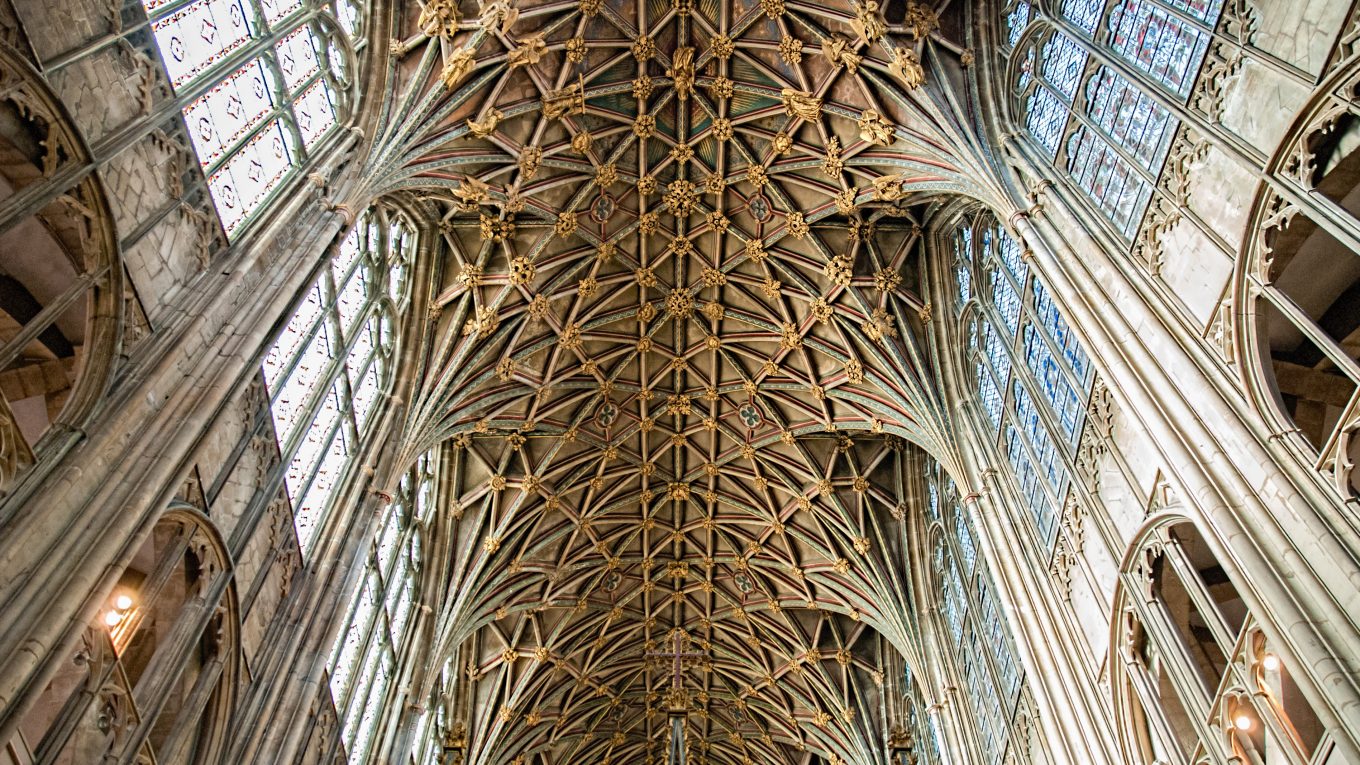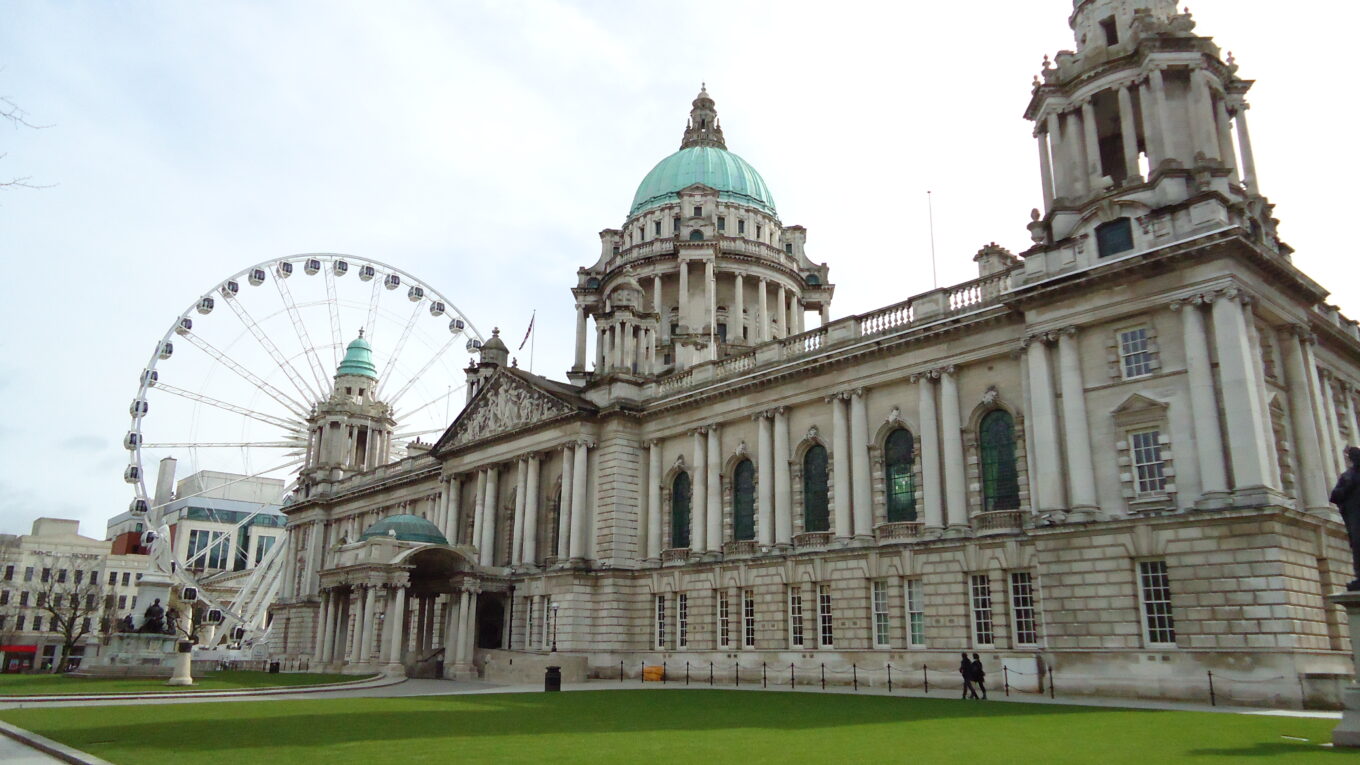Top 25 Examples of Beaux Arts Architecture
Beaux Arts Architecture was a building form that was popular from the mid-19th century up until the early 20th century. It combines elements from other historical styles such as Classical, Renaissance, and Baroque Architecture. It pairs these older elements with new bold and exuberant forms made possible by new construction technologies. Beaux Arts Architecture was influenced by several noteworthy art institutions, known as the École des Beaux-Arts. Students from these schools would go on to design many of the iconic buildings listed below. This article will list 25 of the world’s greatest examples of Beaux Arts Architecture and highlight the major characteristics of this important style.
When was the Beaux Arts Period?
Beaux Arts was a movement in art and architecture that emerged in the mid-19th century and continued up until the early 20th century.
Beaux Arts Architecture coexisted at the same time as many other building styles. These include Neoclassical, Romanesque Revival, Gothic Revival, Renaissance Revival, Baroque Revival, Art Nouveau, Art Deco, and Modernisme.

What’s the difference between Beaux Arts Architecture and Baroque Revival Architecture?
Beaux Arts Architecture can often be confused with Baroque Revival Architecture, and buildings in both styles can resemble one another. The big difference between the two is that Beaux-Arts Architecture typically contains new and innovative construction techniques that were not seen in the original Baroque Age. These include the use of structural steel as well as the implementation of glass within domes, canopies, and skylights.
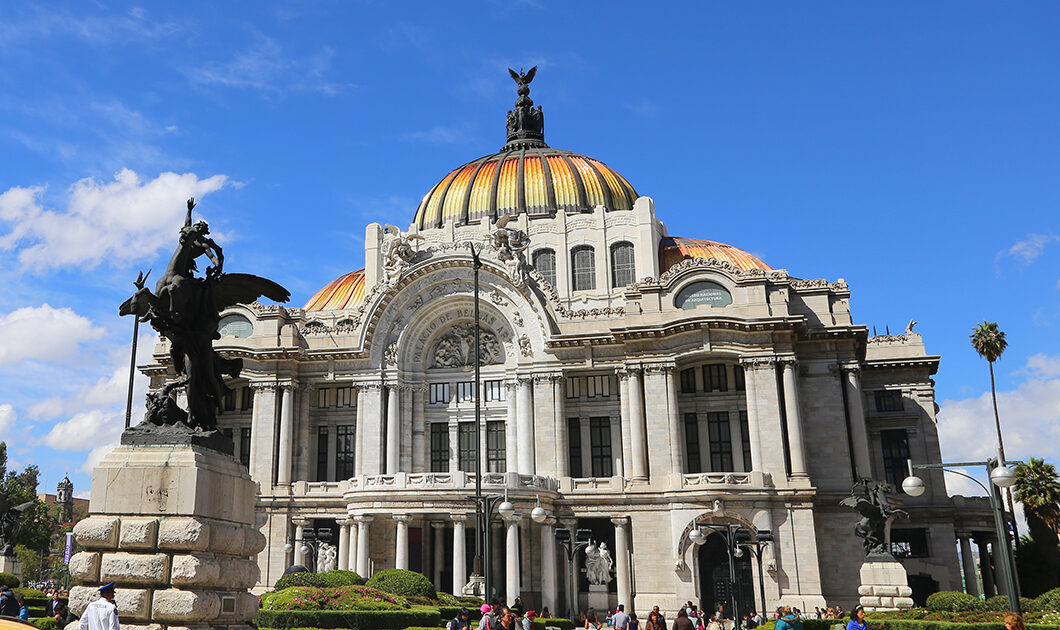
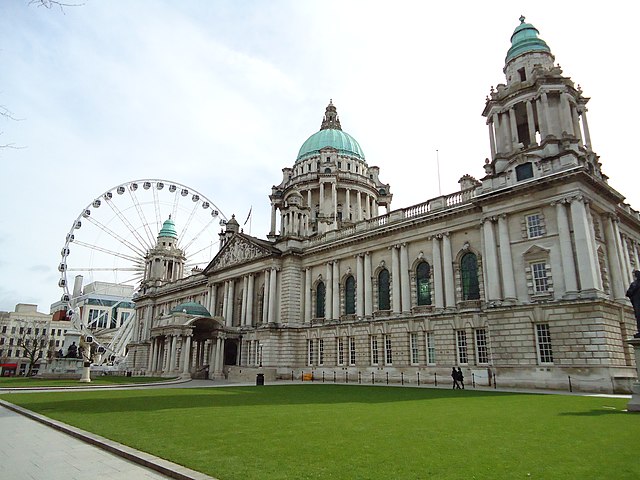
The left image above shows the Palacio de Bellas Artes in Mexico City. It is a Beaux-Arts Style building. The right image above shows Belfast City Hall, which is a Baroque Revival building.
Other Terms for “Beaux Arts” Architecture
Many people use the term “Beaux Arts” as a sort of catch-all term for this style. However, this type of architecture can also be known as “Bell Epoch” or “Gilded Age” Architecture. While some may argue that all of these styles are distinctly different – ultimately they share the same characteristics and existed at the same point in architectural history.
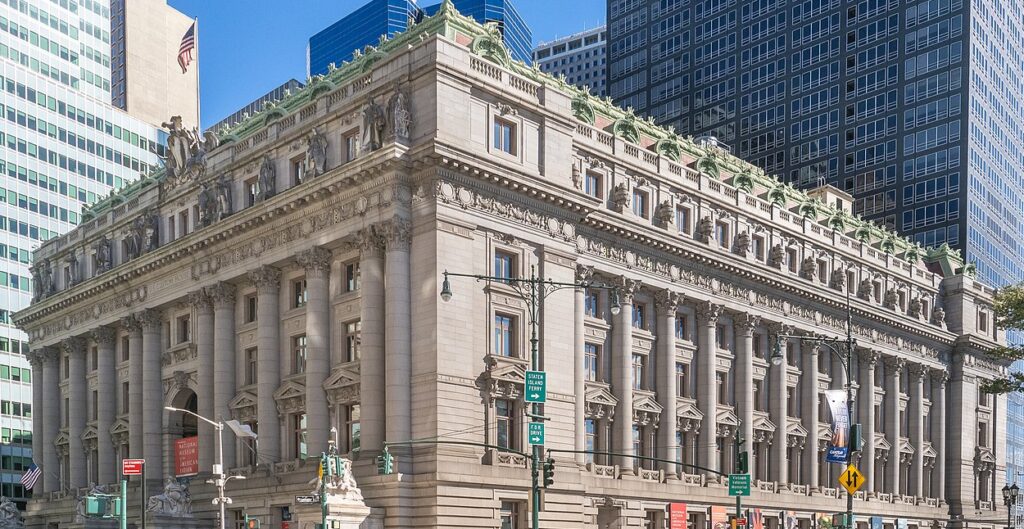
Elements in Beaux Arts Architecture
Structural Skeletons made of Iron and Steel
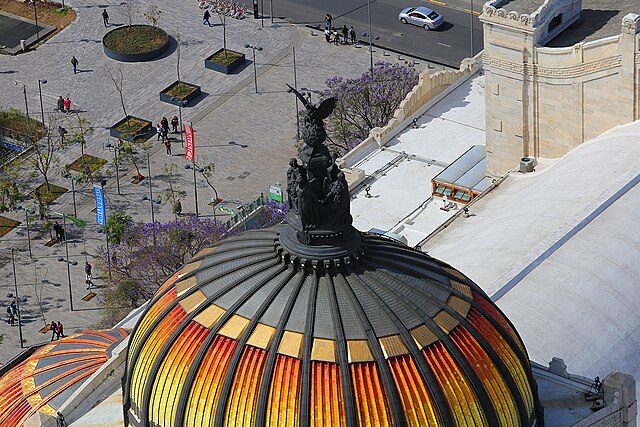
One major design component found in many examples of Beaux Arts Architecture is the use of new and innovative construction technologies. This was a time when traditional masonry construction was being reinvented with the use of skeletal structures made from Iron and Steel. A great example is the dome atop the Palacio de Bellas Artes in Mexico City. Here the use of thin structural members creates a very elegant, lightweight, and unique dome.
Large Glass Elements and Forms

The use of large glass forms is another design element found in Beaux Arts Architecture. This is again thanks to new technologies that emerged during the late 1800s. Glass domes, skylights, and canopies can be found in many Beaux Arts Buildings, and its a major design element that separates Beaux Arts Architecture from other architectural styles. The image above shows the large interior space within the Grand Palais in Paris France.
Elements from Classical Architecture
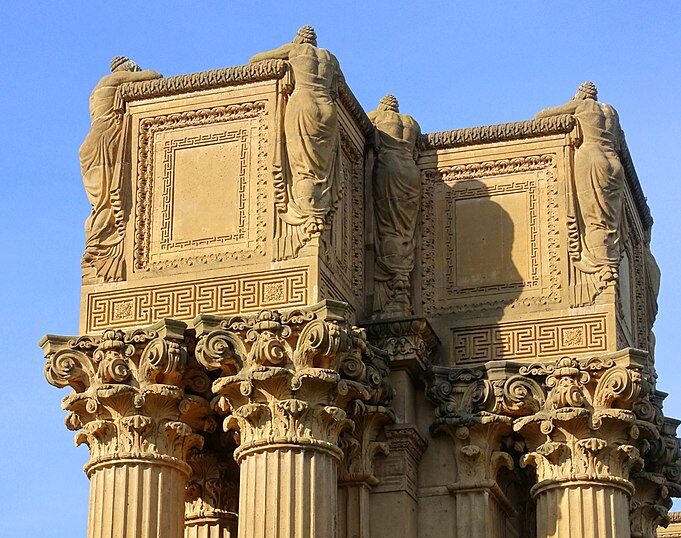
Like so many other architectural styles, Beaux Arts Architecture utilizes many of the elements found in the Classical Architecture of the Ancient Greeks and Romans. These include, but are not limited to: pediments, friezes, frescoes, mosaics, balustrades, cornices, and column capitals from the Classical Orders. (Doric, Ionic, and Corinthian) The reuse of Classical Elements dates all the way back to the Middle Ages and it’s one of the key ideas behind Architectural History. In the image above you can see Corinthian Column Capitals atop the Palace of Fine Arts in San Francisco California.
A Monumental Scale
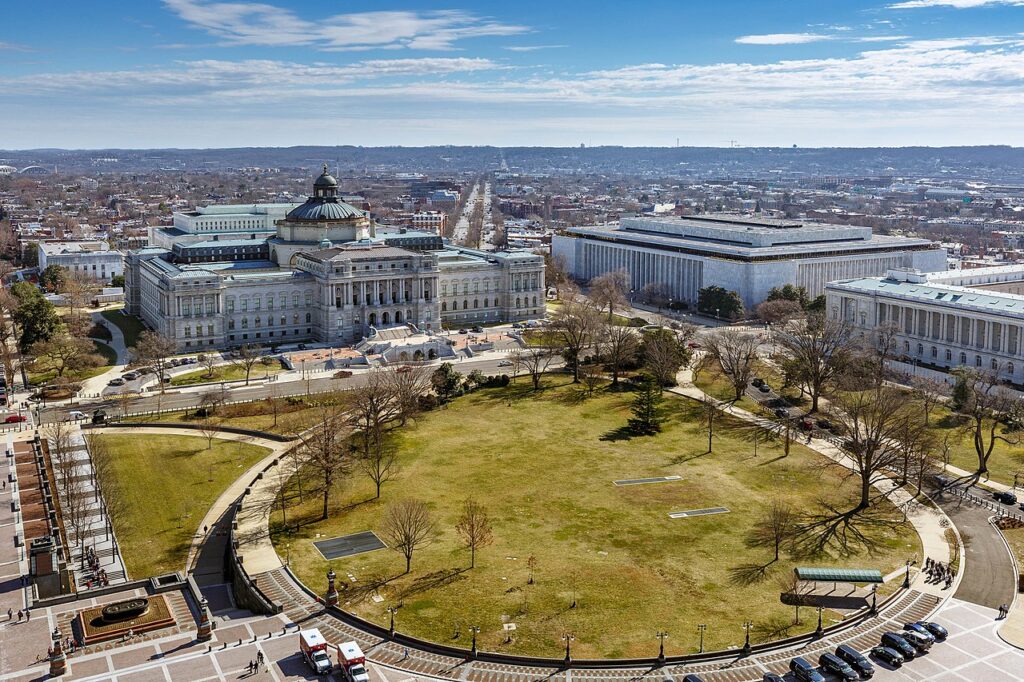
The Beaux Arts movement overlapped with a period of increased economic activity and population growth that occurred at the end of the Industrial Revolution. Many buildings show off the optimism and spirit of the day and have a monumental and grandiose appearance. Beaux Arts Architecture utilizes larger-than-life elements and is full of idealized forms and figures. The image above shows the Thomas Jefferson Building in Washington DC. Here the massive scale of the building embodies the growth and prosperity of The United States at that point in history.
Elements from Other Historic Architectural Styles
One final characteristic found throughout Beaux Arts Architecture is the utilization of elements from older architectural styles. The 19th century was a time when the Revival Movement was prevalent throughout the world. Various revival styles attempted to recreate the historic buildings of the past. This same idea can be seen in the many works of Beaux Arts Architecture.
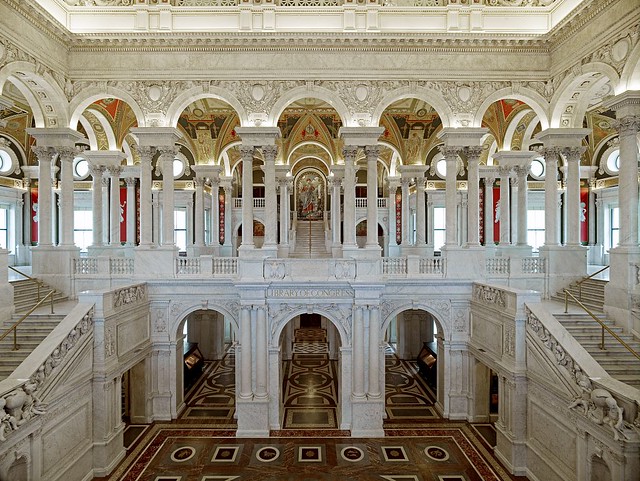
-Balance, Symmetry, and Proportion – main ideas from Renaissance Architecture – are repurposed in many Beaux Arts Buildings. This can be seen here at the Thomas Jefferson Building in Washington DC.
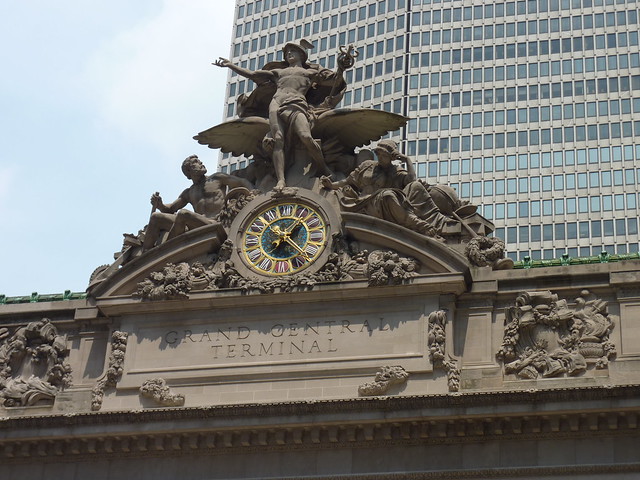
-Detailed sculptural components, like these at Grand Central Station in NYC, are borrowed from Baroque Architecture

-A monumental scale and a sense of opulence and grandeur are also borrowed from Baroque Architecture – like what is seen here at the Palacio de Bellas Artes in Mexico City.
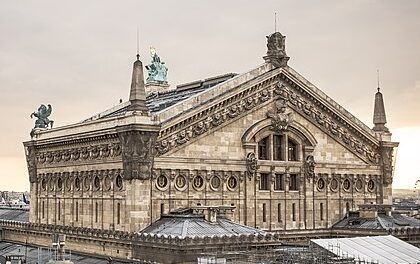
-A lack of color with many whitewashed elements is borrowed from Neoclassical Architecture, you can see that here at the Opera Garnier in Paris France.
What are the greatest examples of Beaux Arts Architecture?
Below is a list of some of the world’s greatest examples of Beaux Arts Architecture. The order of the buildings is based on their size, splendor, and overall influence on the evolution of the Beaux Arts Style.
1. Palacio de Bellas Artes – Mexico City, Mexico

The Palacio de Bellas Artes in Mexico City is one of the world’s greatest examples of Beaux Arts Architecture. The building serves as a Cultural Center and Performance Venue and it was completed in 1934. Although most of the interiors were outfitted in the Art Deco Style, the exterior was designed using many Beaux Arts Design elements. One of the building’s most iconic features is the large elliptical glass dome that sits atop the center of the structure. This glass dome was made possible by an iron skeletal structure, a relatively recent invention at that time.
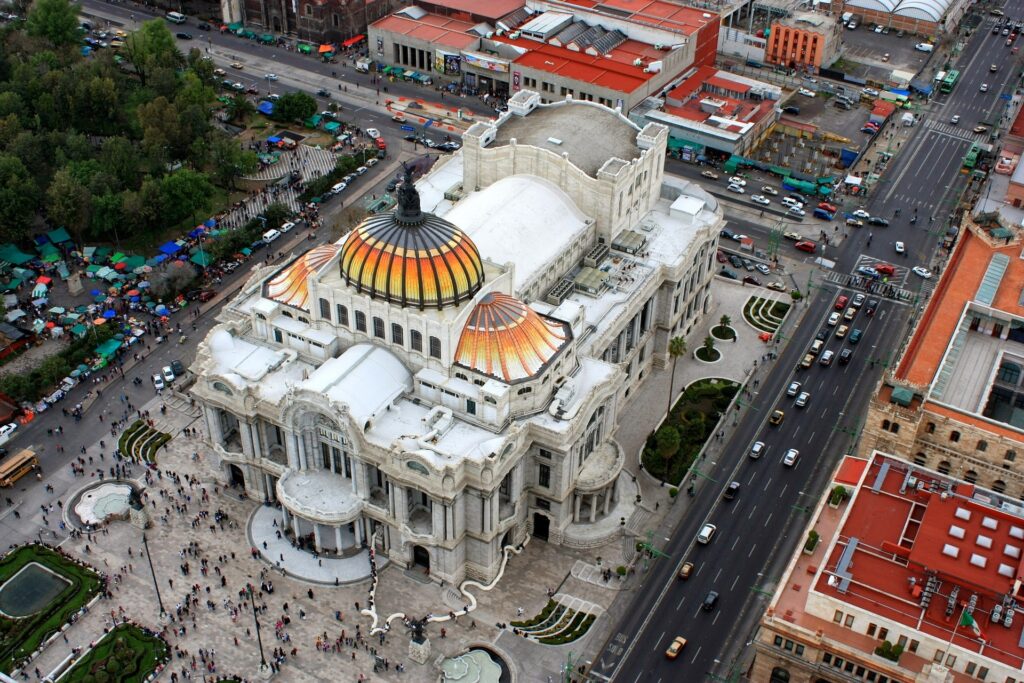
The Palacio de Bellas Artes is one of the most iconic buildings in all of Mexico City and has become a symbol of Mexico over the past century. It is located in one of the busiest neighborhoods in Mexico City, not far from other monuments such as the Monumento a la Revolución and Mexico City Metropolitan Cathedral. The Palacio de Bellas Artes is commemorated as part of a UNESCO World Heritage Site, along with several other notable buildings in Mexico City.
2. Palace of Fine Arts – San Francisco, California, United States
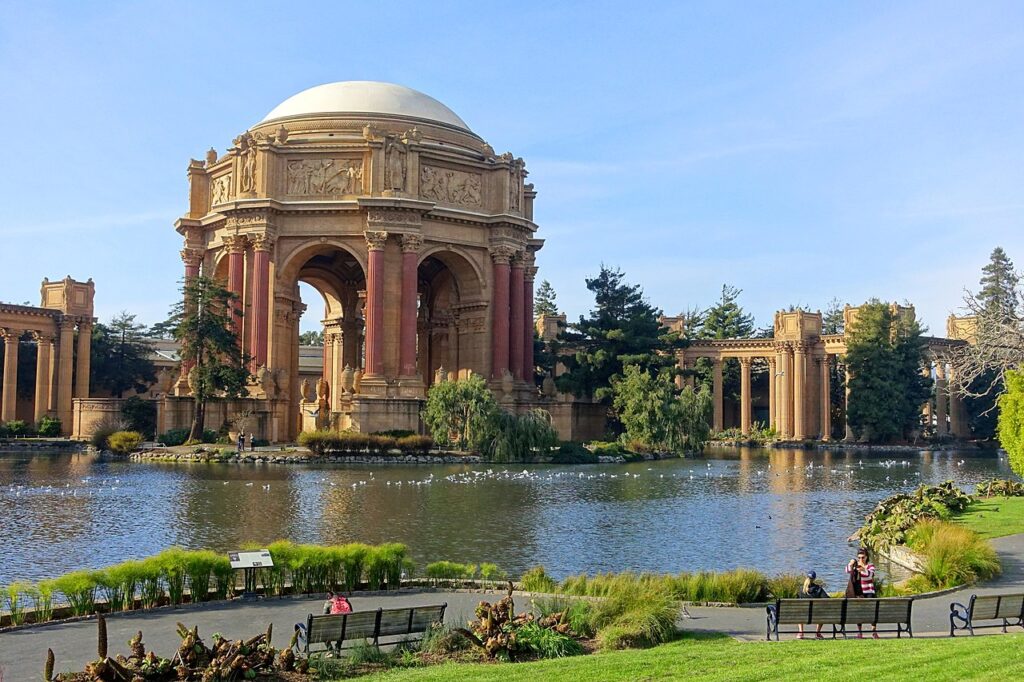
The Palace of Fine Arts is a large example of Beaxs Arts Architecture located in San Francisco California. It was originally constructed as part of the Panama–Pacific International Exposition which was held in San Francisco in 1915. The exposition was a type of World’s Fare. It was intended to draw people to San Francisco, which had recently recovered from the Great 1906 Earthquake. The exposition sprawled over 1 square mile, and it was composed of dozens of unique buildings and monuments.

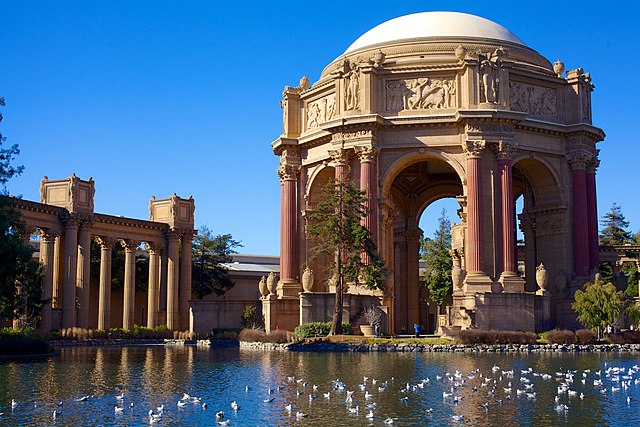
Most of the exposition’s buildings were demolished shortly after its conclusion, however, the Palace of Fine Arts was spared and turned into an incredible public park. The Palace of Fine Arts contains several of the iconic features of Beaux Arts Architecture, including the use of a monumental scale and several blended architectural influences. It’s one of the city’s most visited attractions and it remains a testament to the Panama-Pacific International Exposition and its impact on San Francisco.
3. The MET – New York City, New York, United States
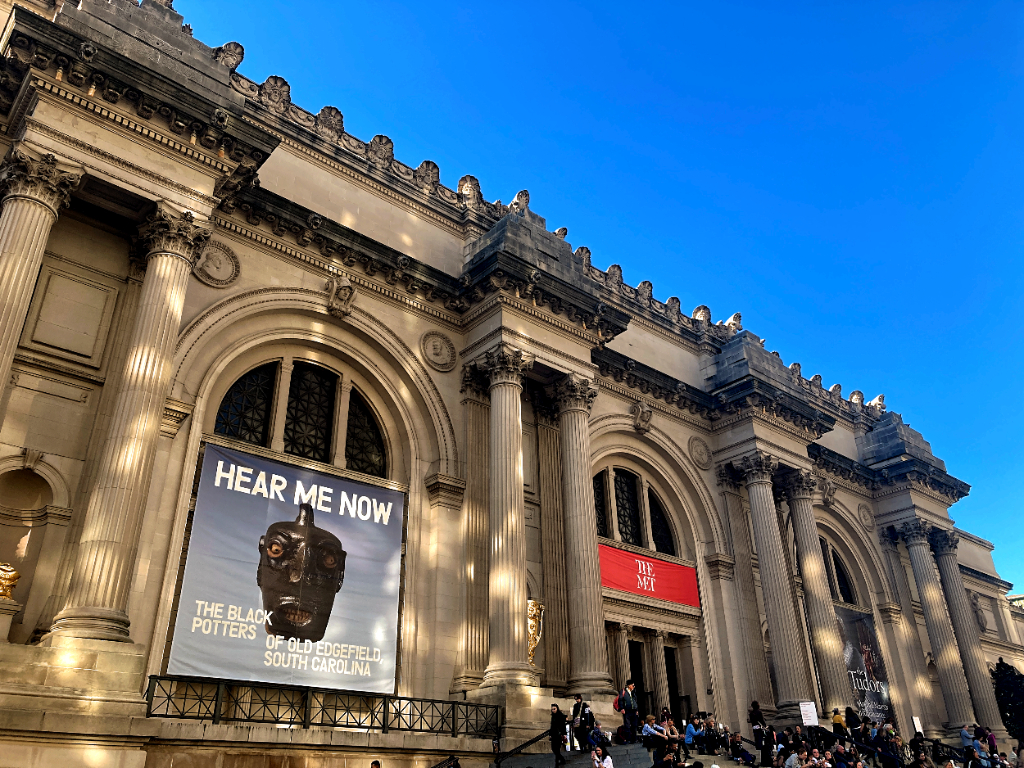
The Metropolitan Museum of Art, also known as the MET, is one of the world’s most renowned museums. It contains a plethora of different works of art ranging from ancient sculptures and mosaics to modern art from contemporary artists. The entire museum is composed of different wings built in various architectural styles. The image above shows the main entrance on Fifth Avenue. This wing was designed by one of the greatest architecture firms of the Beaux Arts Period: McKim, Mead & White. It contains many of the typical elements found in Beaux Arts Architecture.

The MET is situated within Central Park, a large rectangular green space located in the heart of Manhattan Island. The museum was originally established in 1870 and has been expanded several times throughout history. Today the MET is one of the world’s most visited museums. Many local New Yorkers enjoy spending time sitting around the infamous “MET Steps” – located just outside the main entrance.
4. Carlsburg Glyptotek – Copenhagen, Denmark
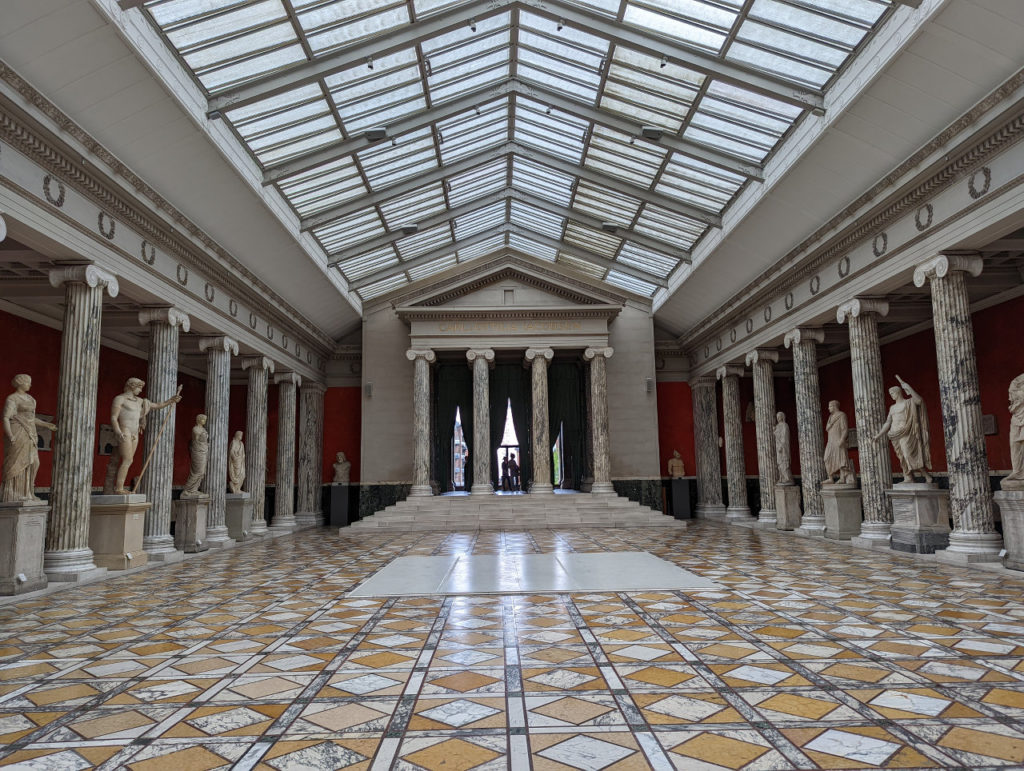
“Glyptotek” is a term for a museum that houses art and artifacts from the days of the ancient Greeks and Romans. There are many famed Glyptoteks in Europe, most notably in Munich and Copenhagen. The Carlsberg Glyptotek was founded by the owner of the Carlsberg Brewing Company, a Danish brewery that was founded in 1847. The founder of the Brewery, Carl Jacobsen, accumulated a vast fortune from all of his beverage sales – and he used a large sum of money to both build the museum and fill it with artwork from his own collection.
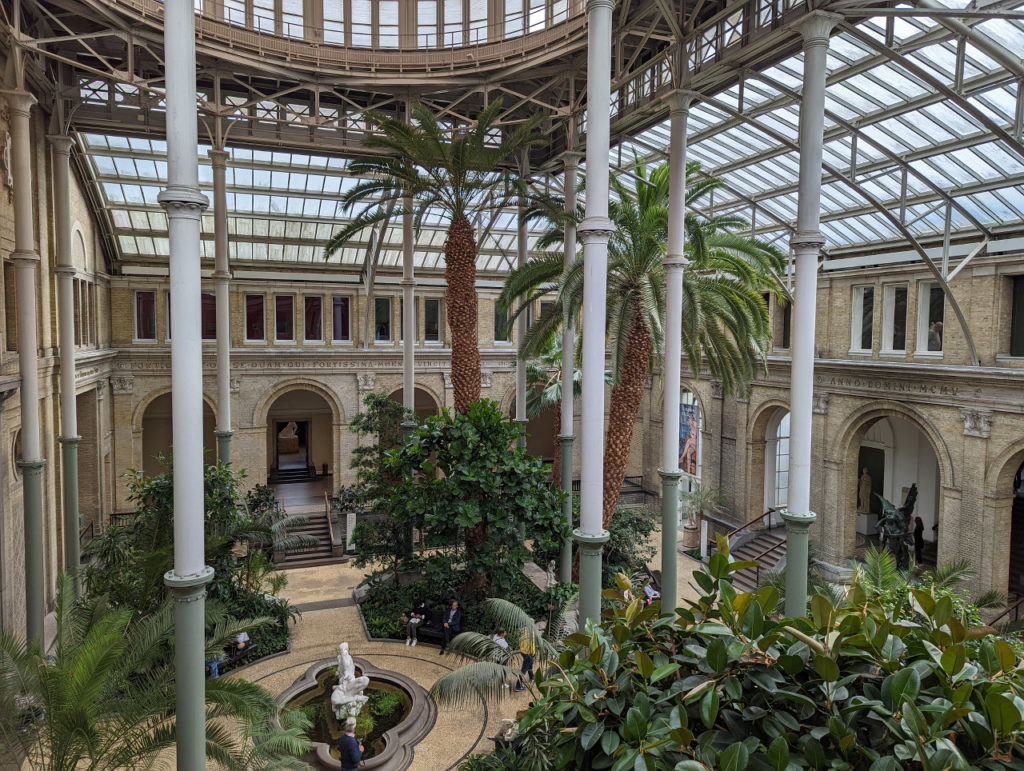
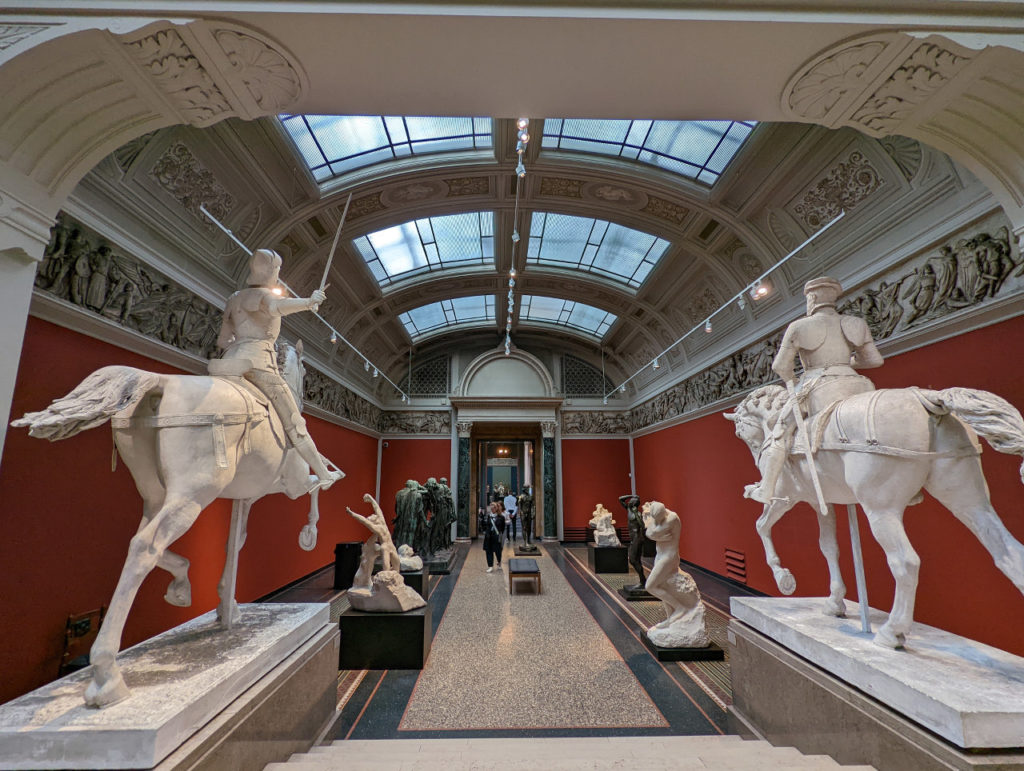
In addition to ancient artworks, the museum also contains a large selection of 19th-century sculptures, including several statues by Auguste Rodin. The upper galleries within the building also house paintings by important European artists like Claude Monet and Vincent Van Gogh. The Glyptotek was largely designed in the Beaux Arts Style, and the left image above shows the museum’s winter garden. The large glass skylight is typical of the Beaux Arts Period and it utilizes new building technologies that were emerging at this point in history.
5. San Francisco City Hall – San Francisco, California, United States
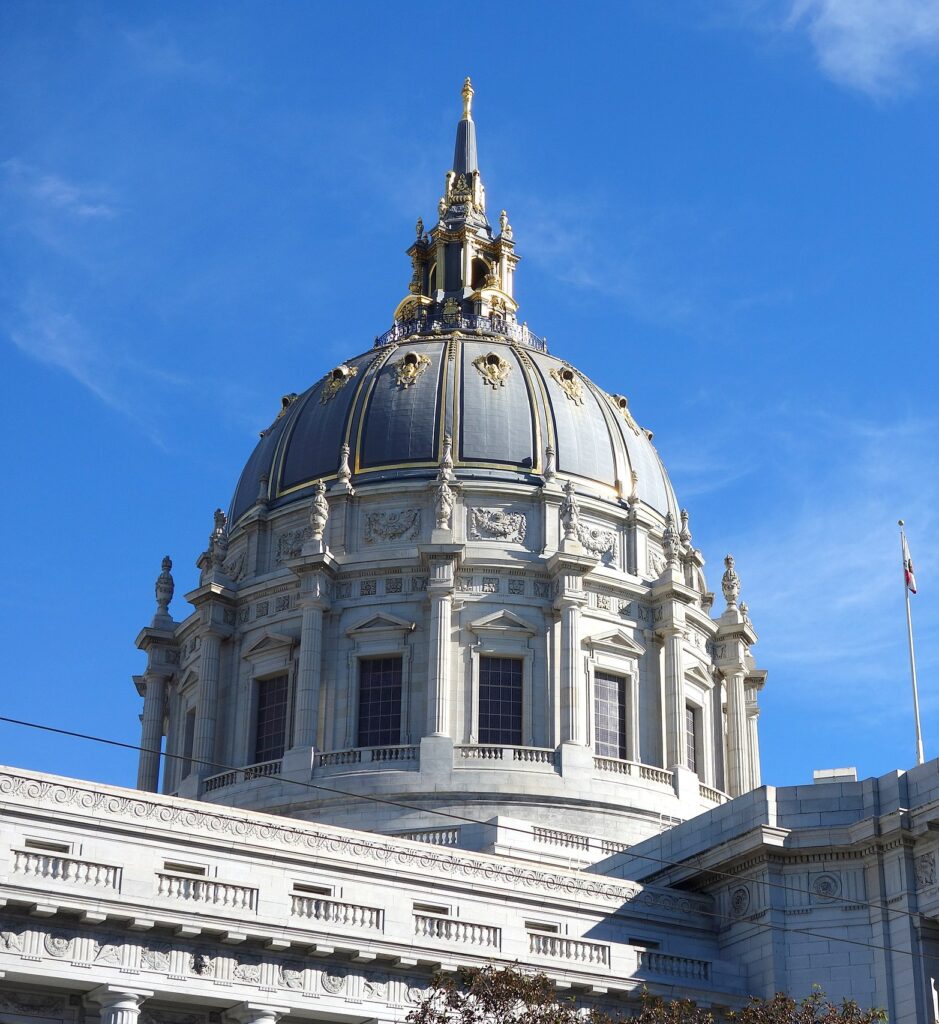
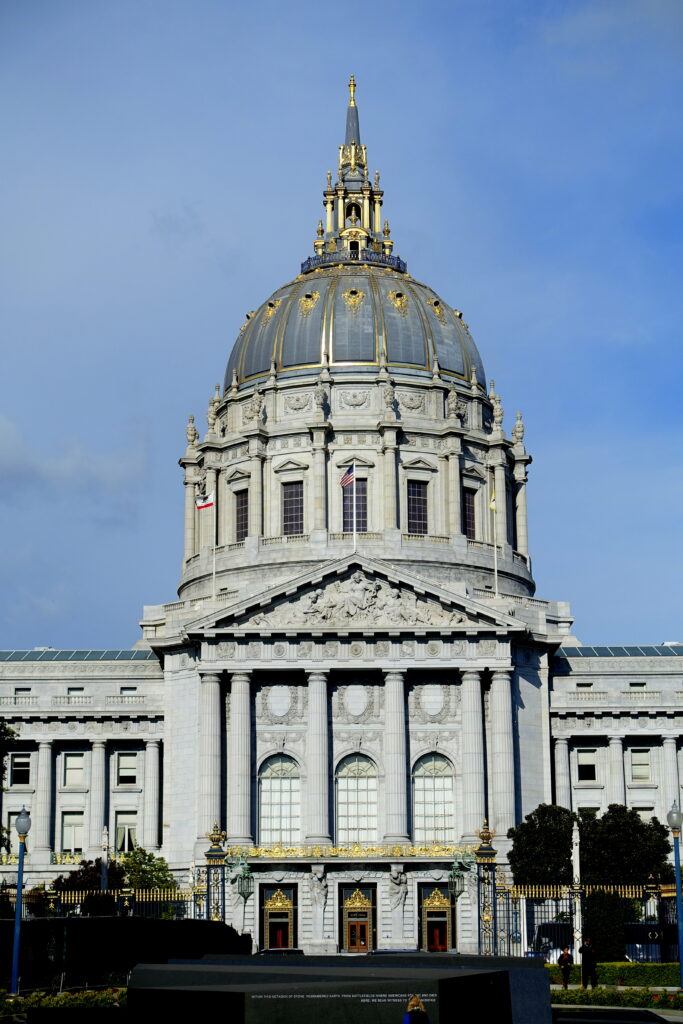
San Francisco City Hall opened in 1915 and was largely completed in time for the city to host the Panama-Pacific International Exposition. The city hall replaced an older structure that was destroyed in the great 1906 San Francisco Earthquake. The building resembles many other capital buildings & city halls found throughout The United States. San Francisco City Hall was designed with lots of lavish Beaux Arts detailing and motifs, The building is embellished with many sculptural elements and has trim coated with Gold Leaf.

The interior of San Francisco City Hall is just as impressive as the exterior. The image above shows the building’s largest atrium, which was outfitted with many key elements found in the Beaux Arts Style. The space contains several Classical Details, as well as a blend of Renaissance and Baroque Architecture. Today San Franciso City Hall still houses the city’s local government, and it has become a symbol of the area’s impressive recovery from the devastating earthquake and fires of 1906.
6. Opéra Garnier – Paris, France
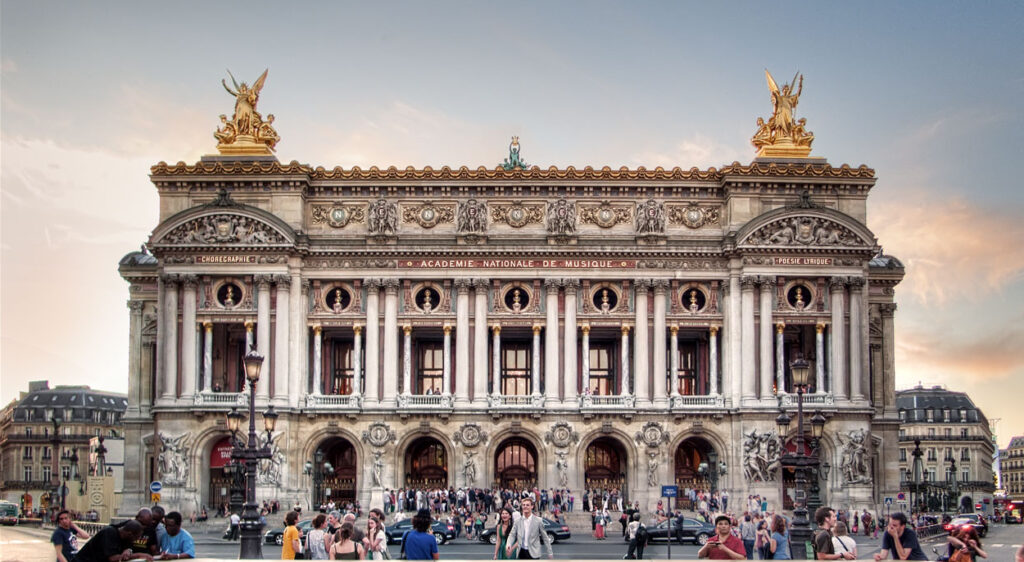
The Opéra Garnier is one of the most well-known buildings in all of Paris, and it’s the city’s greatest example of Beaux Arts Architecture. It was completed in 1875 and quickly became a popular venue for the wealthy upper class of Paris. Thanks to its lavish materials and decor, it is often referred to as the Palais Garnier. The Opéra Garnier is one of the many incredible Opera Houses that can be found throughout Europe, and it still hosts frequent performances.
7. Palace of the Argentine National Congress – Buenos Aires, Argentina

Latin America has a large number of government buildings that are designed in the Neoclassical and Beaux-Arts Styles. One of the greatest examples of this is the Palace of the Argentine National Congress, located in Buenos Aires Argentina. The building was constructed from 1898 to 1906 and utilizes a blend of Neoclassical and Beaux Arts design elements. It has one of the most impressive domes on this list, and it remains one of Argentina’s most infamous landmarks.
8. Flinders Street Railway Station – Melbourne, Australia
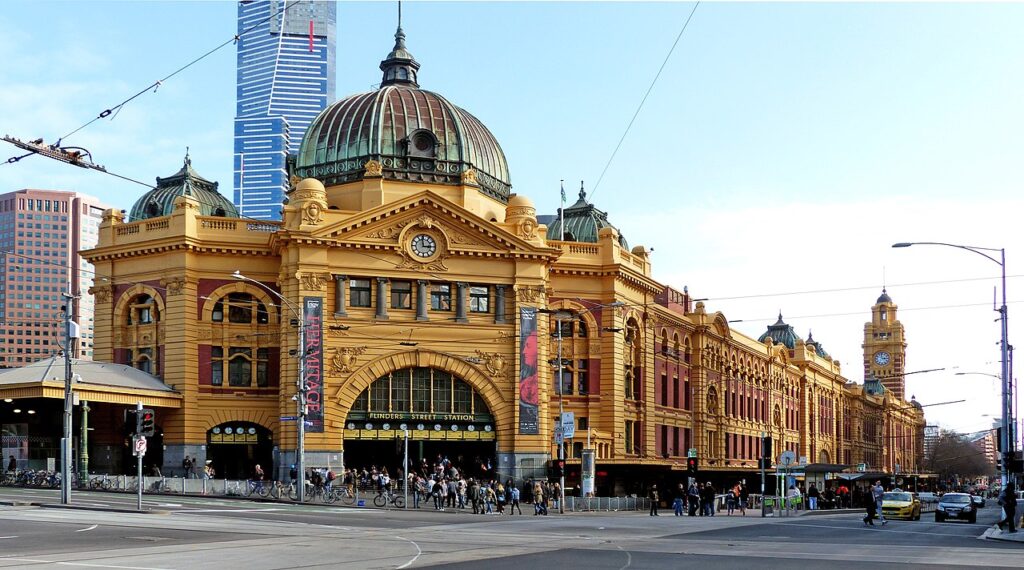
Flinders Street Railway Station is a large train station in central Melbourne. It has a variety of train lines that help connect the inner city to many other towns in the region. The building was completed in 1910, and by the 1920s it had become the world’s busiest train terminal. The station sprawls across two main streets in central Melbourne and is one of the largest buildings in the entire city. Flinders Street Railway Station includes several distinct features of the Beaux Arts Style. There are influences from many other architectural styles like Renaissance and Baroque, and the entire structure is built on a monumental scale.
9. Metropolis Building – Madrid, Spain


Madrid became the capital of Spain in the 16th century. From then on it steadily grew in population to become one of the largest urban centers in the European Union. The city is known for its grand boulevards and impressive government buildings. One of Madrid’s greatest examples of Beaux Arts Architecture is the Metropolis Building which overlooks the intersection of two of the city’s main avenues: the Gran Via and the Calle de Alcalá. The gilded dome of the Metropolis Building is a symbol of Madrid, and it embodies the strong sense of opulence that existed during the Beaux Arts Period.
10. The Breakers – Newport, Rhode Island, United States
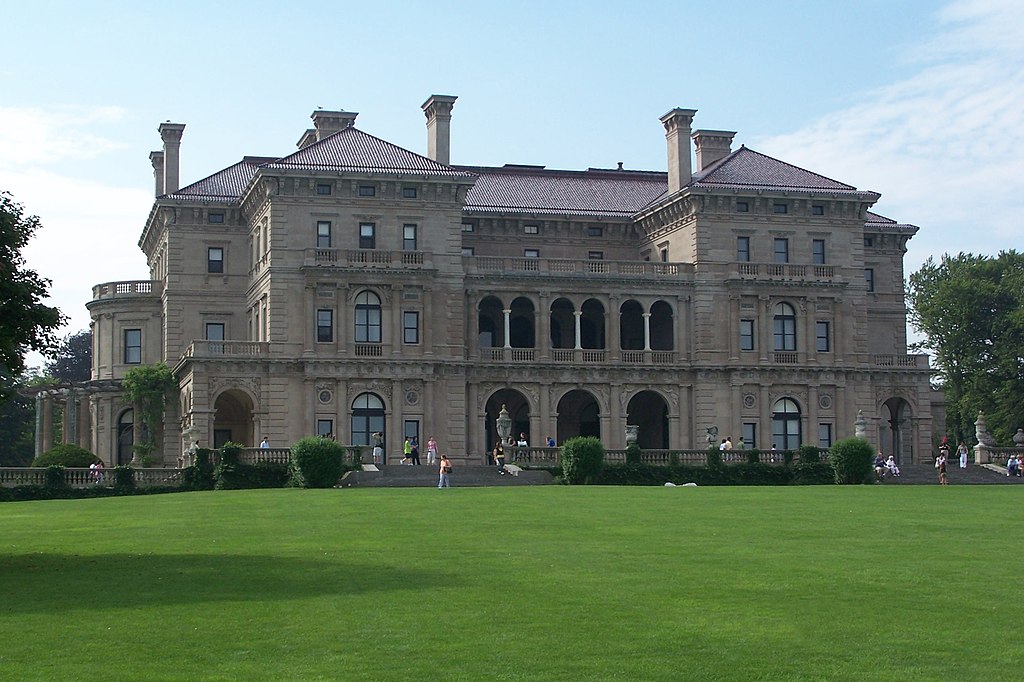
The Breakers in Newport Rhode Island embodies the Gilded Age in The United States. The property was one of several residences built by the powerful mogul Cornelius Vanderbilt II. The Vanderbilts owned several homes in Newport in addition to other residences in New York City and Asheville North Carolina. Just like many Royal Palaces throughout Europe, the Breakers Mansion was built to show off the immense wealth of the Vanderbilts and help them compete with other notable Gilded Age Families such as the Rockefellers and the Carnegies.
11. Municipal Theater of São Paulo – São Paulo, Brazil
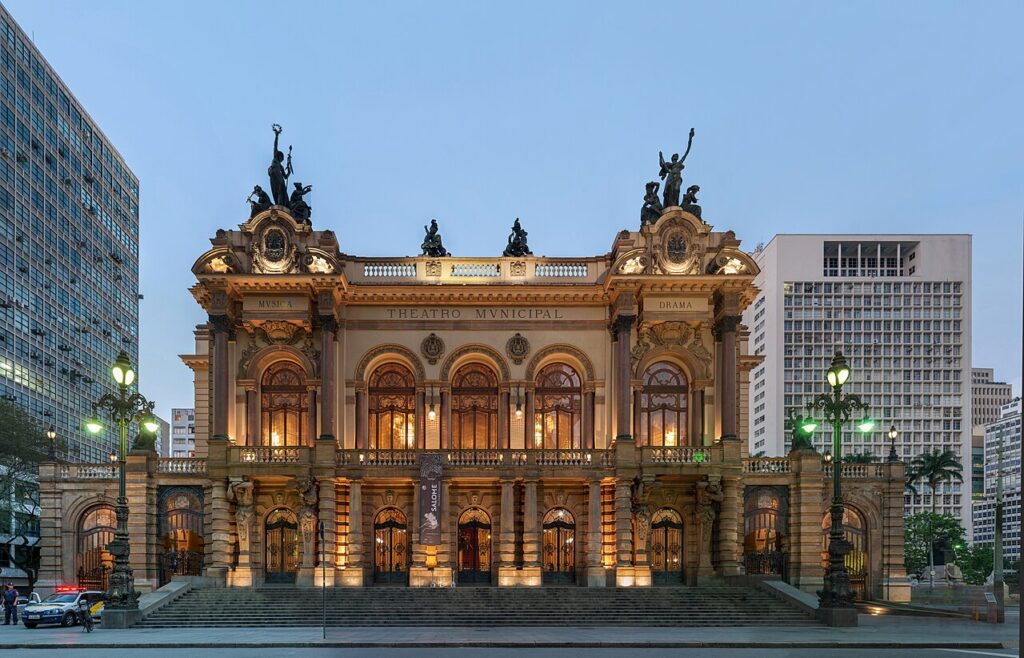
Completed in 1911 and designed in the Beaux Arts Style, the Municipal Theater of São Paulo is one of the city’s most impressive buildings. It still hosts periodic performances held by the São Paulo Symphony Orchestra. The building’s most striking feature is its eclectic nature. It combines important details from Renaissance, Baroque, and Neoclassical Architecture to create something that was unique in its day. There are several other impressive Revival Style Buildings located throughout São Paulo, including the São Paulo Cathedral, designed in the Gothic Revival Style.
12. Thomas Jefferson Building – Washington DC, United States
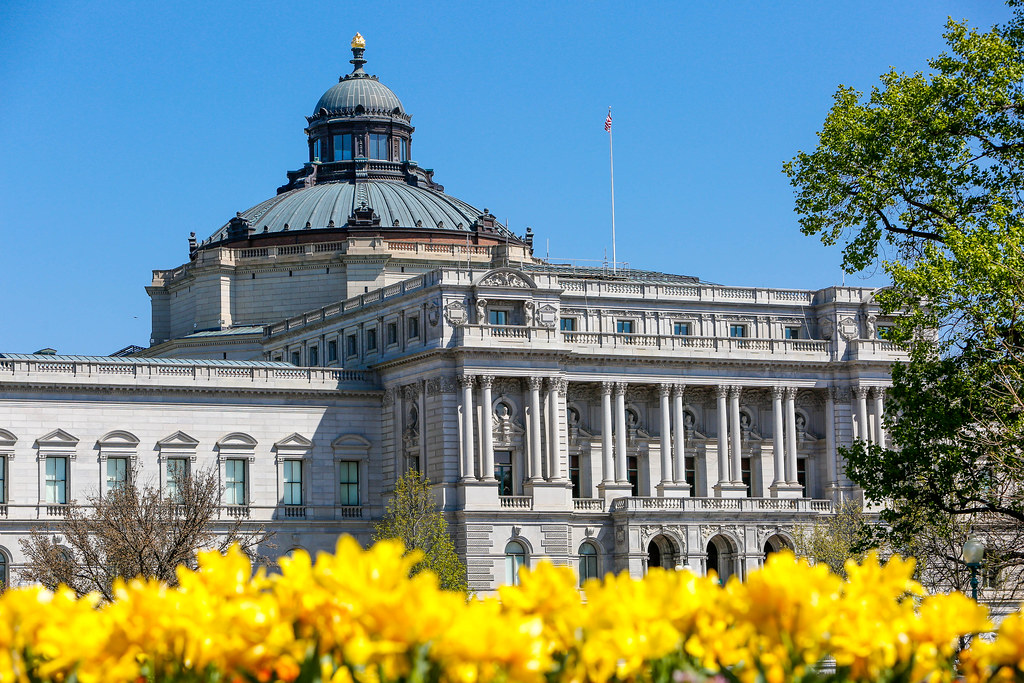

One of countless impressive government buildings in Washington DC, the Thomas Jefferson Building was completed in 1897 and designed in the Beaux Arts Style. The building is part of a group of structures making up the Library of Congress. Many important books, manuscripts, and historical documents are stored inside. The Thomas Jefferson Building features a large central atrium that’s capped with a dome. Bold designs like this were common in Beaux Arts Architecture and it helped make buildings seem grand and imposing.
13. CEC Palace – Bucharest, Romania
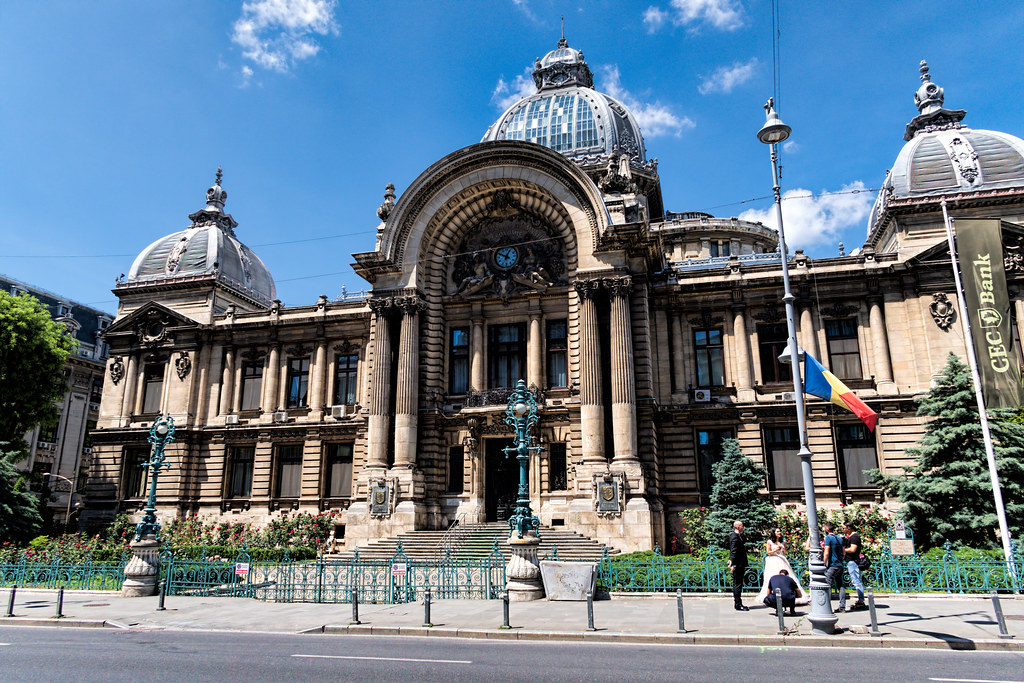
Bucharest, Romania’s capital, is a historic city filled with many impressive turn-of-the-century buildings. One of the city’s many iconic structures is The CEC Palace. The building was designed as the headquarters of CEC Bank, one of Romania’s largest financial institutions. The bank wanted to create an imposing building that would impress and build trust in its customer base. CEC Palace contains several typical Beaux Arts design elements, including the large glass dome that sits atop the building’s main atrium.
14. Parc Cinquantenaire – Brussels, Belgium
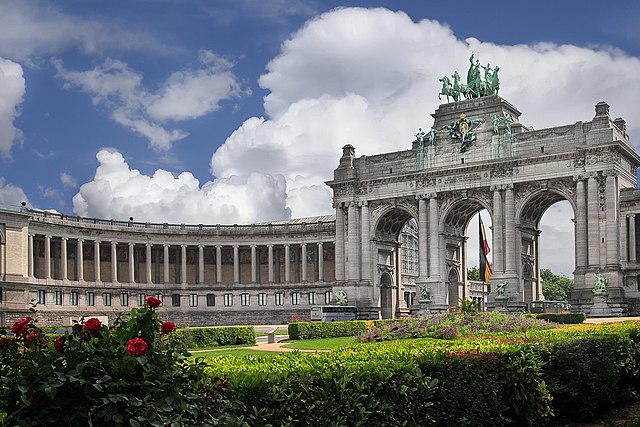
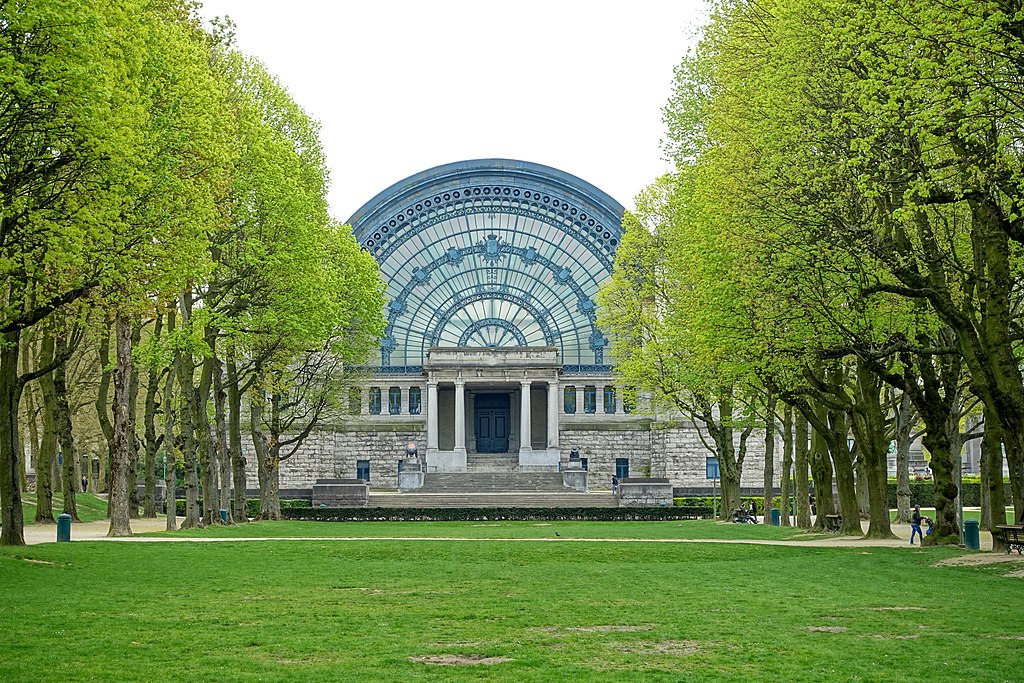
Like many other examples of Beaux Arts Architecture on this list, the Parc Cinquantenaire was constructed for exhibitions that took place in Brussels during the 1800s. The first was the National Exhibition of 1880, and the second was the Brussels International Exposition of 1897. The entire Cinquantenaire complex was modified and expanded throughout the 19th century, and today it contains an assortment of monuments and pavilions. The left image above shows the main Triumphal Arch known as the Cinquantenaire Arcade and the right image shows the Royal Military Museum.
15. Grand Central Terminal – New York City, New York, United States
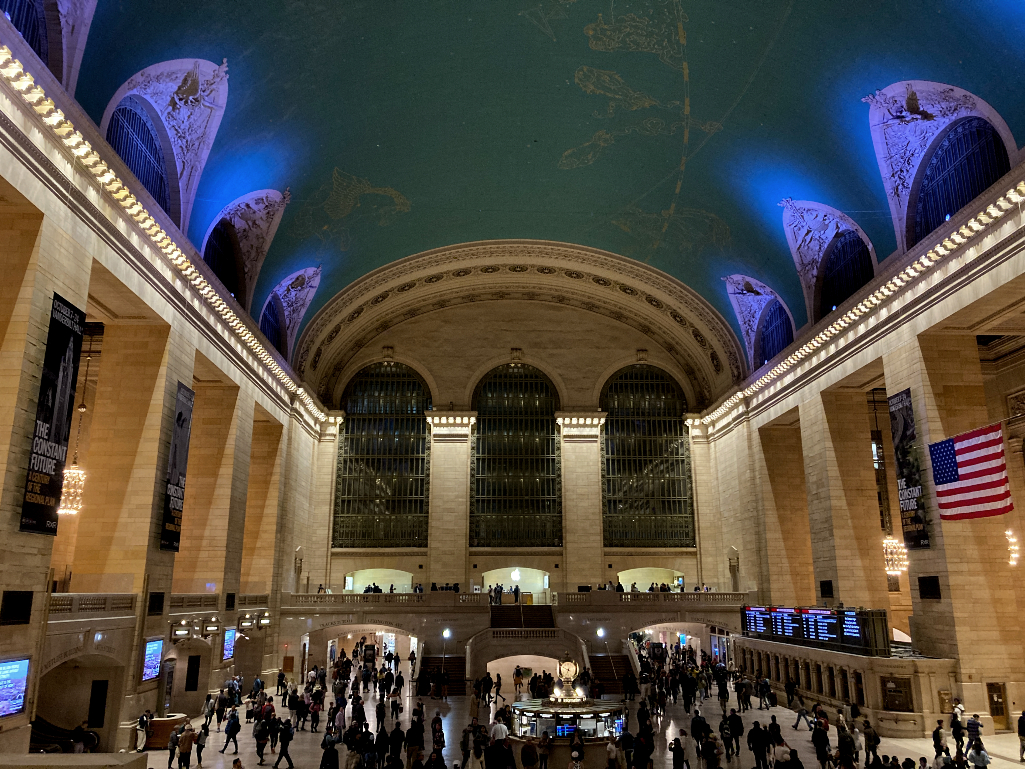
Grand Central Terminal is one of New York City’s major transportation hubs. It was designed by Mckim, Mead, and White in the Beaux Arts Style and was completed in 1913. The building contains a network of train tracks and platforms, but the main hall is its most iconic element. This massive space was built with lavish materials and contains many sculptural elements. The expansive arched ceiling was also painted with a work of art resembling the night sky and many notable constellations can be seen.
Like Architecture of Cities? Sign up for our mailing list to get updates on our latest articles and other information related to Architectural History.
16. Ananta Samakhom Throne Hall – Bangkok, Thailand
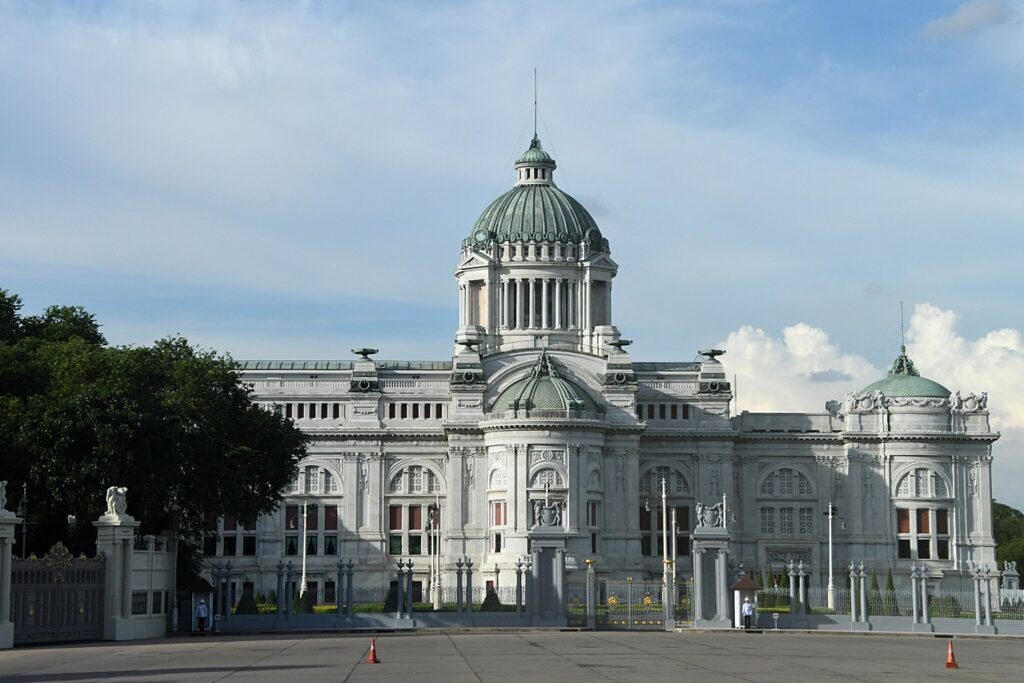
Commissioned in 1908, the Ananta Samakhom Throne Hall is a large Beaux Arts style building located in Bangkok Thailand. It was built as a ceremonial hall for receiving honored guests and holding important functions. The building’s design features many of the typical elements found in Beaux Arts Architecture. It embodies the opulence and splendor found in many buildings of this style. The Ananta Samakhom Throne Hall is just one building in a much larger complex called Dusit Palace. Dusit Palace is composed of various gardens, residences, and monuments, and it’s one of the most visited sites in all of Thailand.
17. Grand Palais – Paris, France
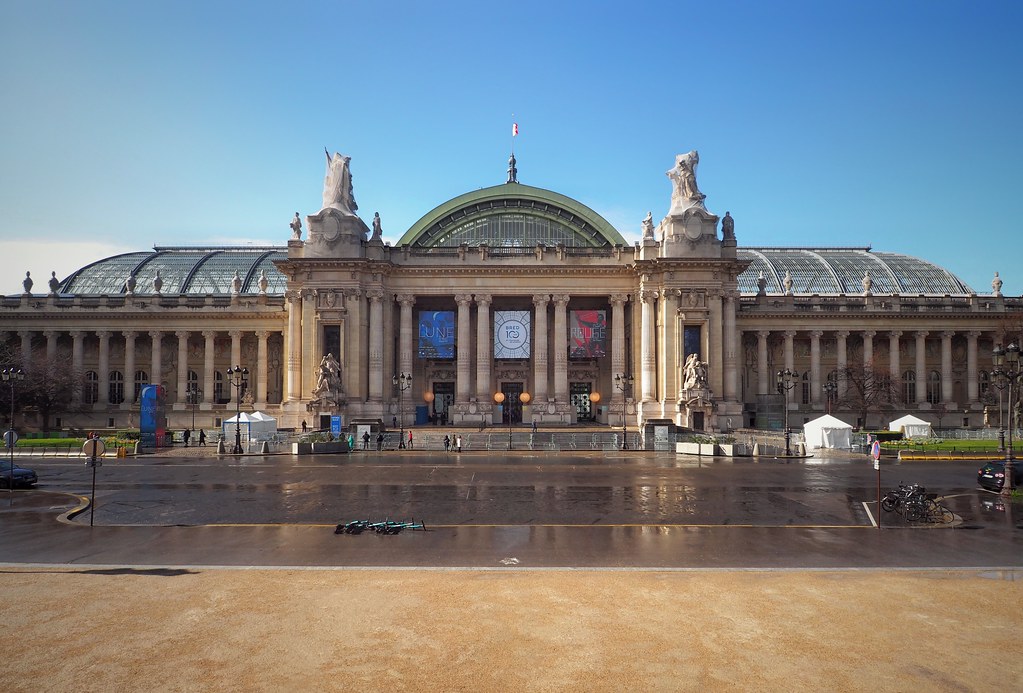
Paris hosted several impressive exhibitions during the late 1800s, most notably the Exposition Universelle of 1889, for which the Eiffel Tower was constructed. A decade later, the city would again host the Exposition Universelle of 1900, meant to commemorate the start of the 20th century. Leading up to the year 1900, dozens of works of Beaux Arts Architecture were constructed in Paris to house exhibits, pavilions, and other functions for the upcoming event. One of the finest surviving examples is the Grand Palais. It was constructed with a massive glass arcade that enclosed a completely open interior space.
18. Romanian Atheneum – Bucharest, Romania
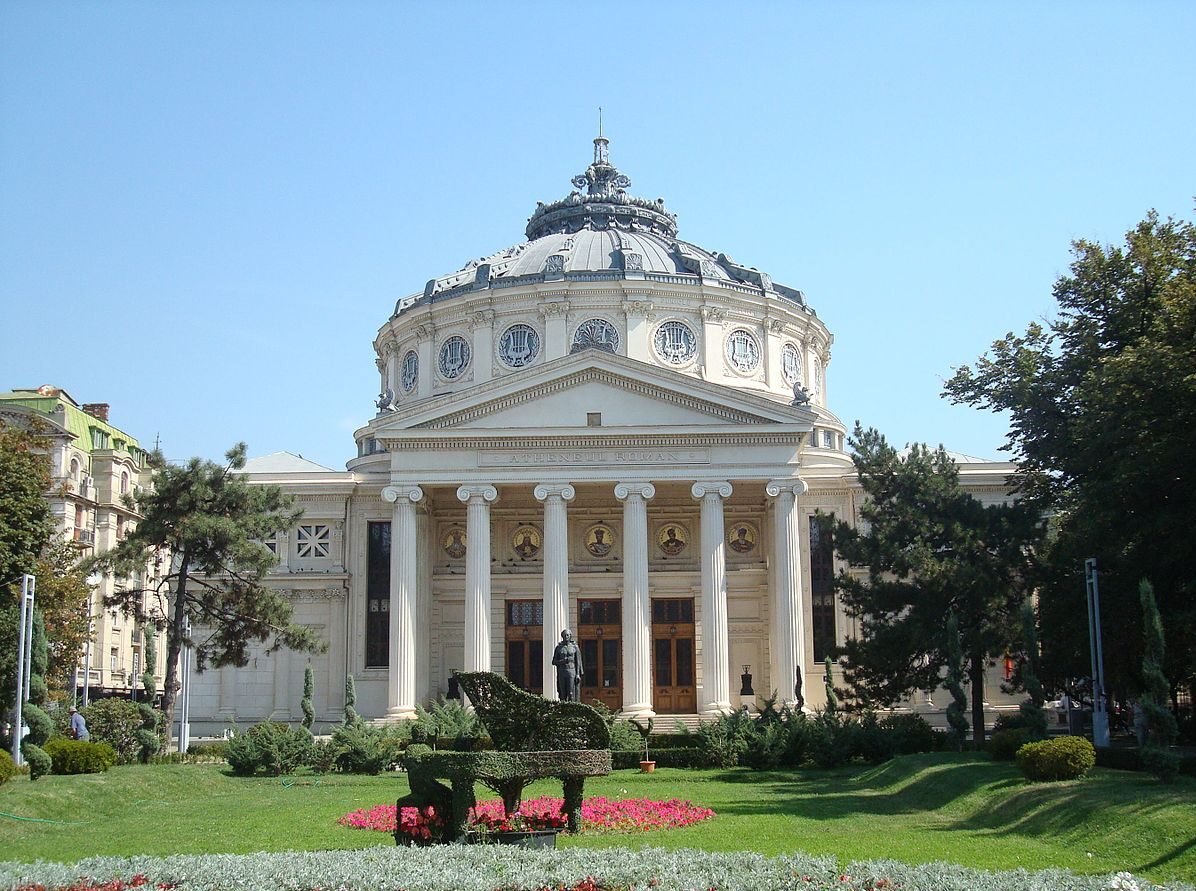
One of several Beaux Arts buildings in Bucharest, the Romanian Atheneum was completed in 1888. It was constructed as a concert hall which benefited from the thriving arts and culture scene that exists in Bucharest. The building blends several different architectural styles. It has a strong Neoclassical influence, but it has a highly elaborate dome that separates it from other Classical structures. This dome in addition to the intricate windows and sculptures throughout the building embody the eclectic nature of the Beaux Arts movement,
19. Brussels Stock Exchange – Brussels, Belgium
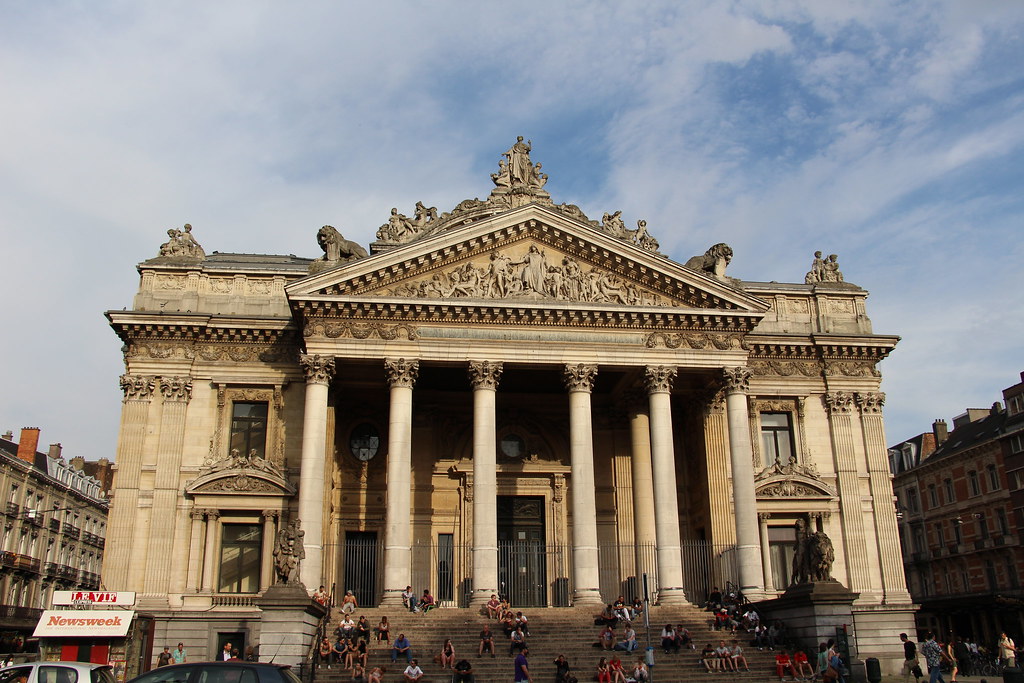
The Brussels Stock Exchange is located in the heart of Brussels’s historic core, right next to the famed Grand Place. It was completed in 1873, at a time when Brussels was emerging as an economic powerhouse in this part of Europe. The Stock Exchange Building contains a blend of architectural styles. There are strong Neoclassical influences, in addition to elements from Renaissance and Baroque Architecture. Many of the building’s interiors have lots of natural light coming in from glass skylights – another feature found in many Beaux Arts structures.
20. Palacio de Aguas Corrientes – Buenos Aires, Argentina
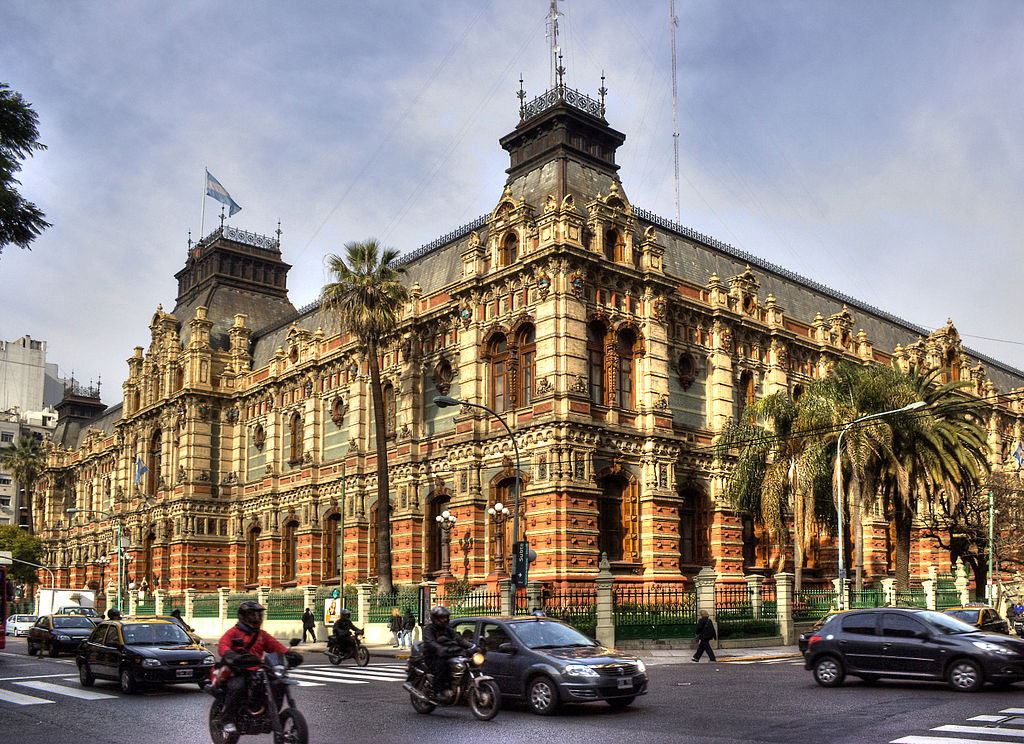
In addition to the Argentine National Congress Building, Buenos Aires contains other Beaux Arts buildings like the Palacio de Aguas Corrientes. Despite the proud palatial exterior, the Palacio de Aguas Corrientes is actually a water pumping station. It was once a vital part of Buenos Aires’ water infrastructure and the facade was created as a way to bring more beauty to the city streets. The Palacio de Aguas Corrientes was completed in 1894 and it remains as one of the many impressive works of 19th-century architecture in Buenos Aires.
21. New York Public Library (Bryant Park) – New York City, New York, United States
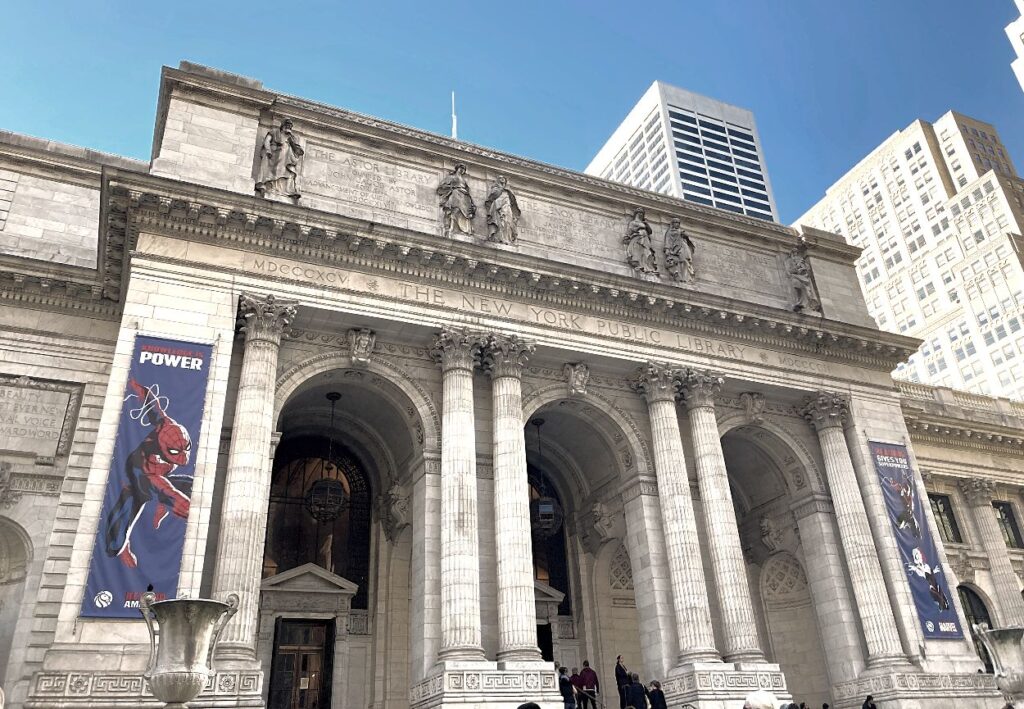
The New York Public Library is a renowned institution with many branches throughout the Five Boroughs of New York City. The most impressive branch of the New York Public Library is by far the one located at Bryant Park in Midtown Manhattan. The building was designed in the Beaux Arts style and it resembles other famous New York City Landmarks such as the MET and Grand Central Station. It was completed in 1911 and has served as the Main Branch of the NYPL ever since.
22. Royal Museum of Central Africa – Tervuren, Belgium

The Royal Museum of Central Africa is a perfectly symmetrical work of Beaux-Arts Architecture. It was constructed to house artworks and artifacts from the Belgian Colonies in Central Africa. Today it houses many historic objects, and it also has a strong emphasis on the ecology, culture, and natural preservation of Africa. The building dates to the late 1800s, and was constructed as part of the Brussels International Exposition 1897. The Royal Museum of Central Africa was influenced by both Baroque and NeoBaroque Architecture, and it also utilizes elements found in the Beaux Arts Style.
23. Alexander Hamilton US Customs House – New York City, New York, United States
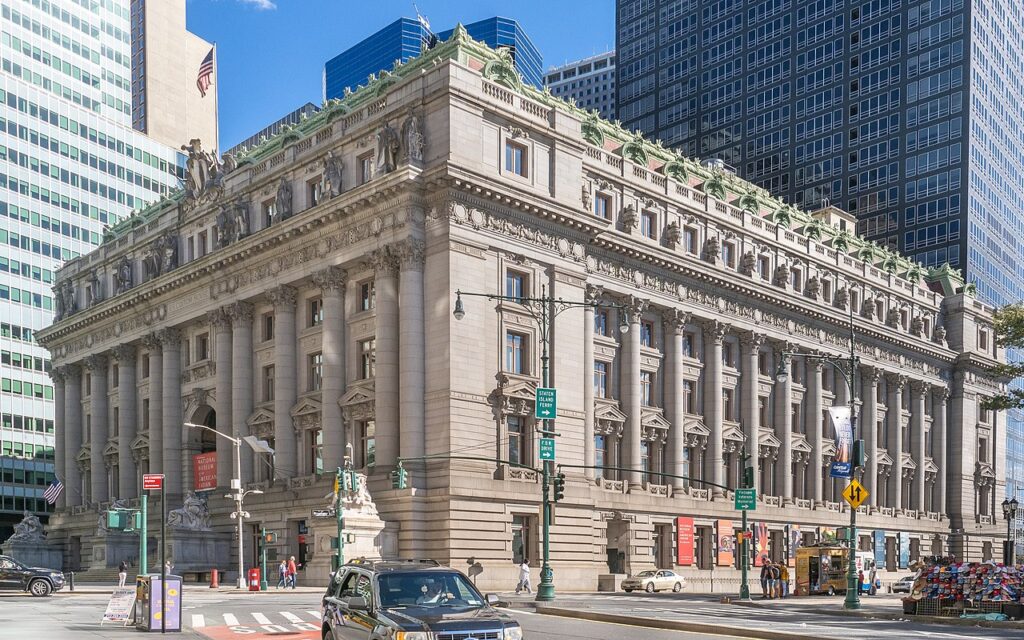
During the 19th century, New York City was a hotspot for architecture. Buildings in many iconic styles were being constructed throughout the city, including Gothic Revival, Beaux Arts, and Art Deco. Many buildings from this time period were demolished to make way for modern structures – but there are lots of surviving examples too. One great example of Beaux Arts Architecture in New York City is the Alexander Hamilton Customs House. It’s located at the lower end of Manhattan Island, just across from Battery Park. The building was completed in 1907 and was listed as a protected structure in the 1960s.
24. Palais Longchamp – Marseille, France
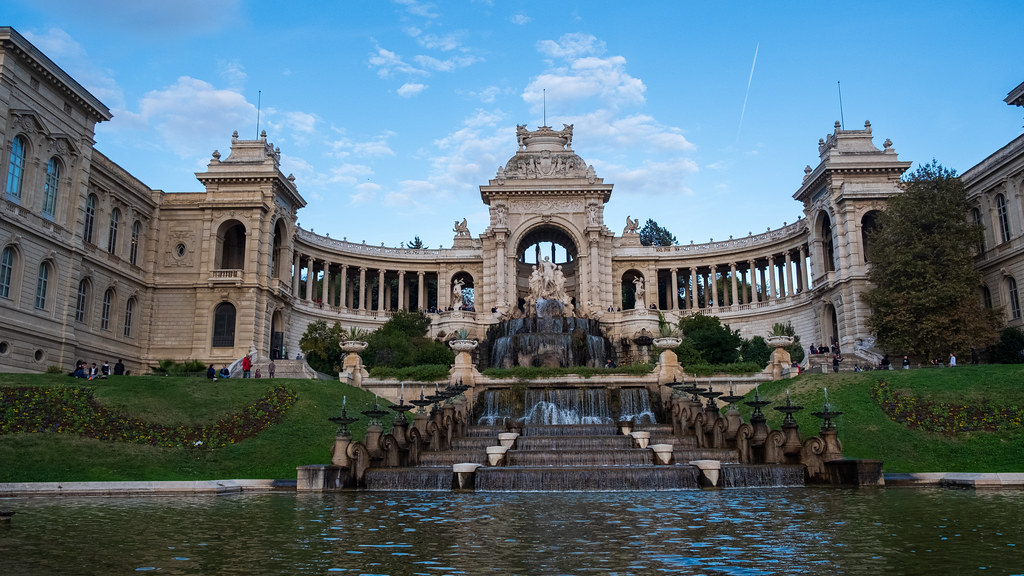
Marseille is located on France’s southern Mediterranean Coast. The city has a long architectural history going back to ancient times. Marseille contains some of the world’s finest examples of Byzantine Revival Architecture, in addition to many great works of Beaux Arts Architecture. Palais Longchamp was constructed in the mid-1800s, and it has become one of Marseille’s most vibrant public spaces. It was designed by an architect who was trained at the École des Beaux-Arts in Paris.
25. Royal Palace of Laeken – Laeken, Belgium
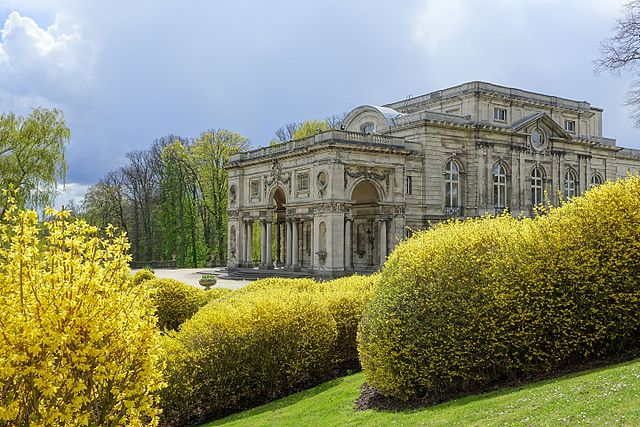

The Royal Palace of Laeken is an official residence used by Belgium’s Royal Family. It’s located in Laeken, an area right outside central Brussels. The entire palace is a compound featuring buildings in various architectural styles including Neoclassical and Renaissance Revival. The left image above shows a new wing that was added to Laeken Palace by Belgian King Leopold II. The right image above shows the Laeken Palace Greenhouses, which are part of the lavish gardens located throughout the complex.
Similar Styles to Beaux-Arts Architecture
Beaux Arts Architecture coexisted with many similar architectural styles. The list below will highlight two architectural styles with elements and motifs comparable to the Beaux-Arts Style.
Baroque Revival Architecture

Baroque Revival Architecture was part of the broader Revival Movement in architecture. The Baroque Revival movement was all about replicating buildings from the Baroque Age. The image above shows one of the world’s greatest examples of this style, the National History Museum in Vienna. This building utilizes many distinct Baroque elements such as intricate details and lavish ornamentation. Both of these features can also be found throughout various works of Beaux Arts Architecture.
Second Empire Architecture
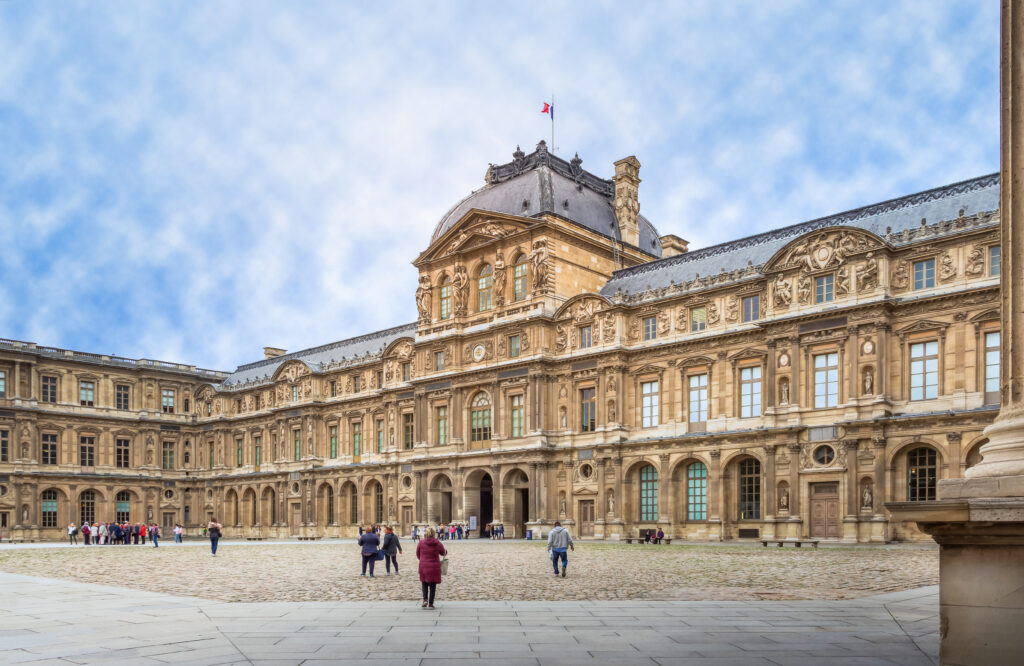
The Second Empire Style is another architectural movement that resembles the Beaux Arts Style. The image above shows an addition to the Louvre in Paris. This portion of the building was constructed by French ruler Napolean III, who wanted to build structures that rivaled the many impressive buildings of the previous French regime. Second Empire Architecture utilizes Baroque elements and contains a sense of grandeur and brilliance that can also be seen in the Beaux Arts Movement.
Beaxs Arts Architecture Today
Today many impressive examples of Beaux Arts Architecture can be found throughout the world. These structures combine a blend of different architectural styles and also utilize a strong sense of Grandeur and new modern building elements like skylights and glass domes. The Beaux Arts Movement began in the late 19th century and would live on until the early 20th century. Beaux Arts Architecture was a key component in the dozens of World Fairs that occurred during this time period, and many of the world’s greatest cities still contain monuments from this period. Today buildings like the MET in New York, and the Palacio de Bellas Artes in Mexico City all embody the spirit and character of the Beaux Arts Age, and they continue to impress visitors today.
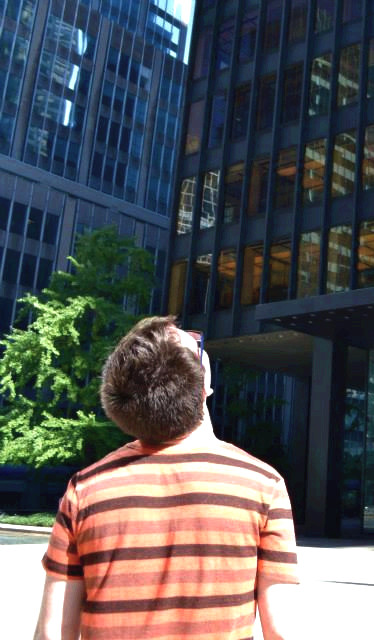
- About the Author
- Rob Carney, the founder and lead writer for Architecture of Cities has been studying the history of architecture for over 15 years.
- He is an avid traveler and photographer, and he is passionate about buildings and building history.
- Rob has a B.S. and a Master’s degree in Architecture and has worked as an architect and engineer in the Boston area for 10 years.
Like Architecture of Cities? Sign up for our mailing list to get updates on our latest articles and other information related to Architectural History.

Several skyscrapers can also be seen including the Art Deco Styled Chrysler Building.
\
